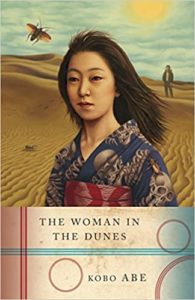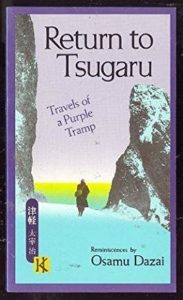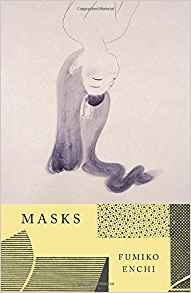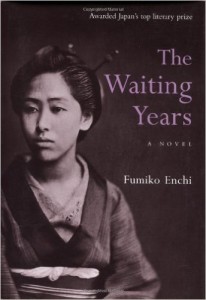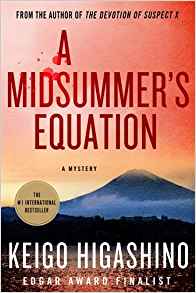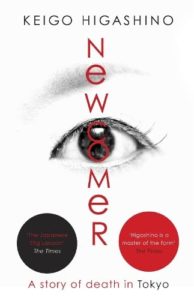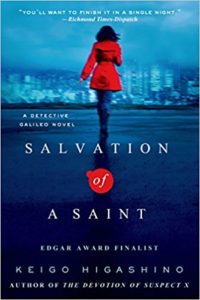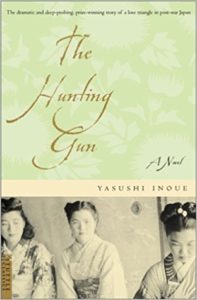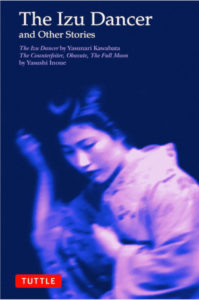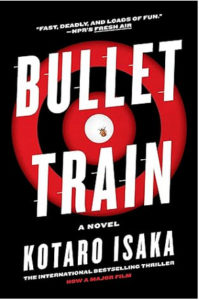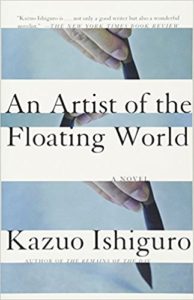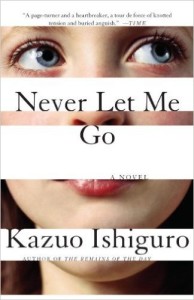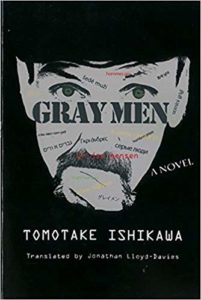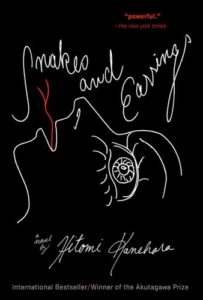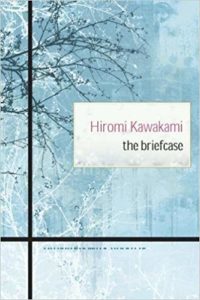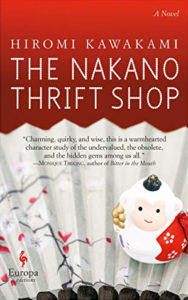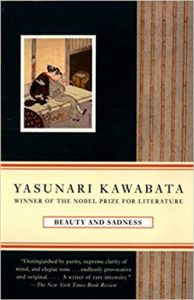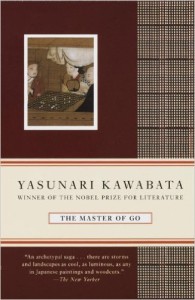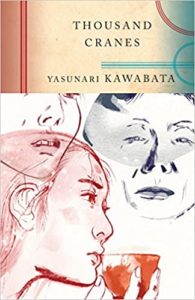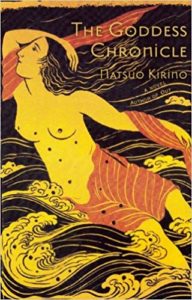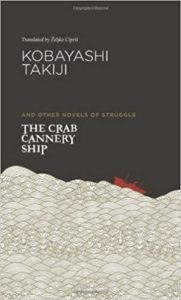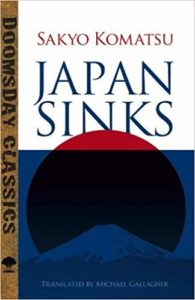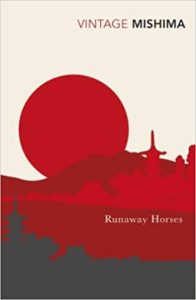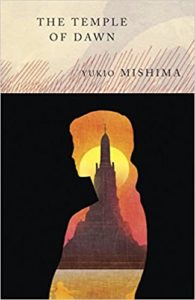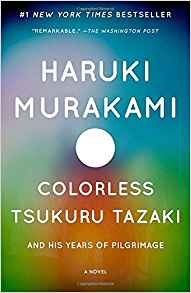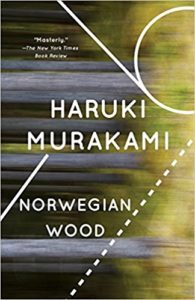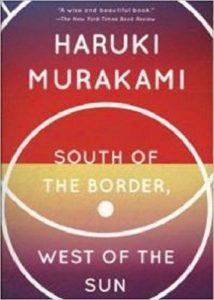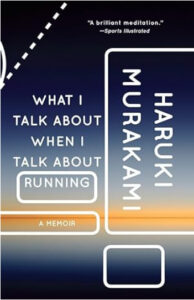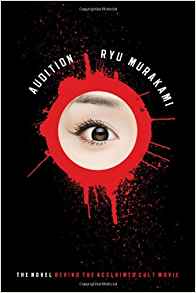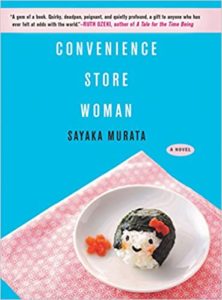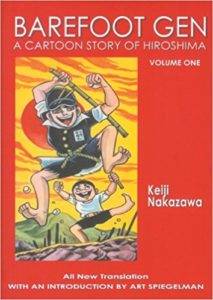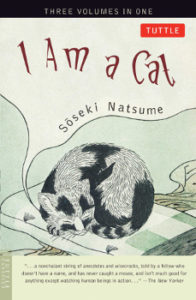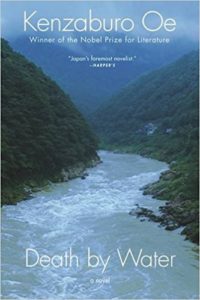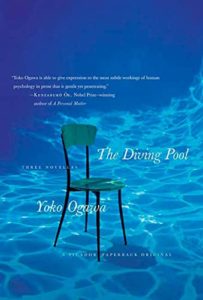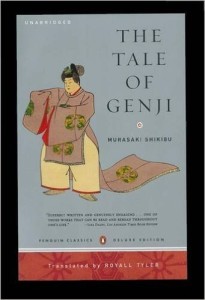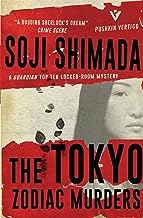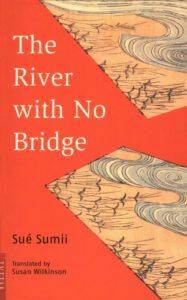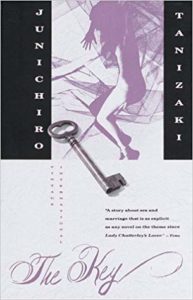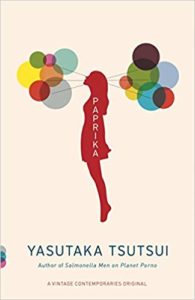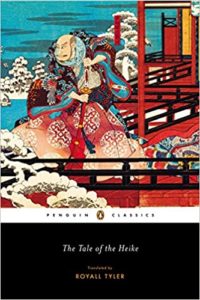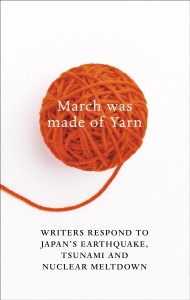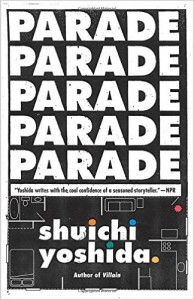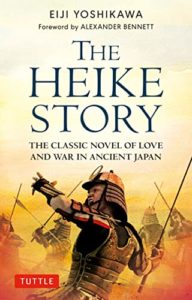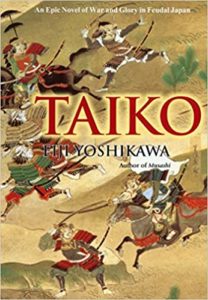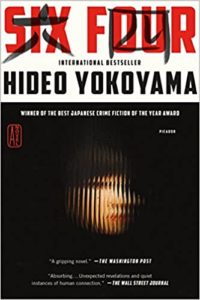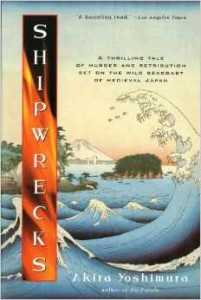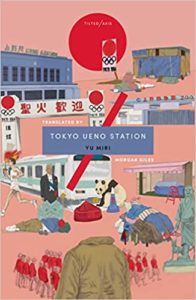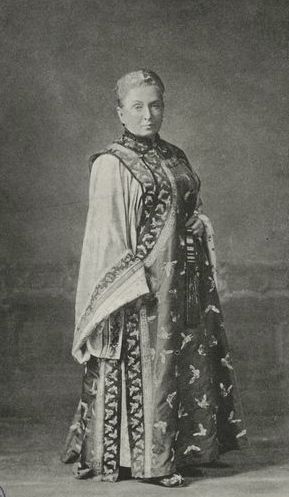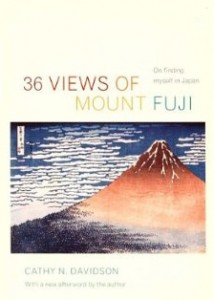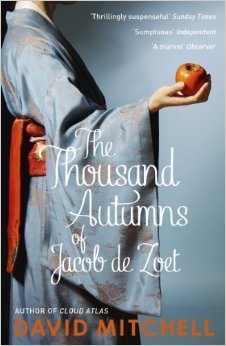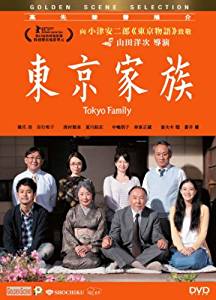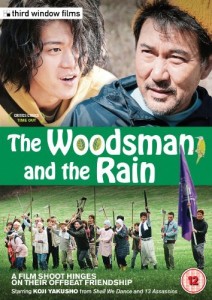I read a lot of books, always have. Ever since I have decided to move to Japan, I focused on reading Japanese literature (in translation, for now), because I think delving into original literature is a good way to get to know a country and its people.
On this page, I am collecting all the book reviews I have done on the blog before, usually on Sundays. So, you will find here a short synopsis of the book and, most of the time even shorter, what I thought about it. I am no literary critic, and I read simply for my own enjoyment, so please don’t expect any deep philosophical insights into an author and his style.
The list below is ordered alphabetically by author, starting out with Japanese literature. Afterwards is a short list of mostly nonfiction books by Japanese and foreign authors, and at the end are a few films. There are links to amazon if you want to get the books for yourself.
Japanese Literature
Books by Japanese Authors
This is a list of books by Japanese authors I have read over the years. My plan was to focus on books that would teach me about the Japanese and life in Japan, but as it turns out, I seem to gravitate towards crime and mystery novels…
Kobo ABE
Kobo Abe, born in Tokyo in 1924, was a Japanese writer, playwright, musician, photographer and inventor. Following his father’s footsteps, he studied medicine in Tokyo and graduated in 1948. In his last year in medical school, he started writing short stories, and already in 1951, he received the prestigious Akutagawa Prize. Woman in the Dunes, published in 1961, earned him the Yomiuri Prize and international acclaim and was turned into a film. Abe was famous for his surreal and modernist style. He died in 1993.
The Woman in the Dunes
Niki Jumpei travels to a remote beach to catch sand beetles for his collection. On his search, he discovers a village with houses that are overcome by the sand, so much so, that some of them stand on the bottom of pits dug into the dunes. When he misses the last bus home, the village elders allow him to stay with a woman who lives in one of these sunken houses. The next morning, however, Jumpei finds himself trapped down there. Forced to help the woman excavate the sand so as not to be buried by it, he must choose whether to fight against the inevitable or to give in to it – and to the woman.
This is probably the best known book by Kobo Abe and a personal favourite of mine to which I return every so often. We follow Jumpei’s inner journey as he is trapped at the bottom of the pit, and the question “what would I do” is ever present. The ending of this novel is interesting, and depending on your own answer to the question above will either come as a shock or as a natural conclusion of Jumpei’s path.
If you want to give this kafkaesque novel a try, you can get it from amazon.
Sawako ARIYOSHI
Sawako Ariyoshi, born 1931 in Wakayama, developed an interest in the theater already as a student and her own plays are widely performed in Japan. She was a prolific writer of short stories and novels and became one of the country’s most famous female novelists, who won the prestigious Akutagawa prize and a number of other Japanese literary awards. Her books deal with social issues like the depopulation of rural areas or the plight of the elderly, which are as current now as when they were written. She died in 1984.
Kabuki Dancer
When Izumo no Okuni comes to Osaka with some fellow villagers, all she wants to do is dance. Her rustic folk dances and songs quickly gain her a loyal following among the common folk, and she even gets invited to perform for high ranking samurai and court nobles. Her husband Sankuro, ever so interested in fame and fortune, would like her to dance only for wealthy patrons, but Okuni opts to move to Kyoto instead. There, at the banks of the Kamo river near Shijo street, her distinct and innovative style draws large crowds of spectators and, in time, competitors who imitate her. However, Okuni remains ahead of them all, and despite numerous setbacks, she remains “Best in the World” and single-handedly invents what is known today as Kabuki.
This book blends what is surely known about Izumo no Okuni with old tales and legends. The result is a gripping life story of a woman who did not always get her way, but nevertheless insisted on leading her own life amidst the turbulent last years of the Japanese warring period and the beginning of the Tokugawa Shogunate.
I greatly enjoyed this book about Izumo no Okuni that follows her life from the age of 17 until her death at 37. While much of her personality depicted here must be considered fiction, it is hard to conceive how a less strong-willed person would have been able to create an art form that is still practised (and innovated) today, 400 years after her death. Fans of Kyoto will recognise some of the places mentioned in this book.
If you’re ready for an interesting historical novel that is set in Japan and still doesn’t feature any swordfighting – not real one, at least – get this book from amazon.
Osamu DAZAI
Osamu Dazai was the pseudonym of Shuji Tsushima, born in 1909 as the eighth (surviving) child of a man from humble origins who eventually became a respected local politician. From an early age on, Shuji wanted to become a writer, and he eventually moved to Tokyo as a student of French literature. Aged only 26, he was nominated for the very first Akutagawa Prize, and although he did not receive it, his reputation was made. His most important works were published after WWII. Always the family’s enfant terrible, he finally committed suicide with his mistress in 1948, at only 39 years of age.
Return to Tsugaru
Tsugaru is the old name of the northernmost peninsula of Honshu, which today makes up part of Aomori prefecture. The people in Tsugaru have always been poor and, as the part of Japan from which to set sail for Hokkaido, has had a reputation of a certain backwardness in cities like Tokyo
Osamu Dazai, considered among the foremost Japanese authors of the 20th century, was born in Kanagi, a small town on the Tsugaru peninsula. In this memoir from 1944, he takes us on a trip to his hometown and nearby places, like the castle town Hirosaki, the village where he went to school, etc. Travelling chiefly on foot, he pays visits to family members and relatives, as well as old friends, where he is always welcome and served sake and crabs, his favourite food.
This book is part travelogue, part history – both of Tsugaru and his own family – part commentary on current events and the wartime of 1944. Throughout the book shines Dazai’s deep love for the land and the people living there.
This book is a classic, and after all these years, it is still available on amazon.
Fumiko ENCHI
Fumiko Enchi (1905 – 1986) was born in Tokyo. She was a sickly child, so she was home-schooled and was taught English, French, and Chinese literature, and through her grandmother she got to know the classics of Japanese literature. When she was 21, her first play was published, and from 1930, she began to write fiction, to not much acclaim at first. After a hiatus in and after WWII, she started to write again in the early 1950s, and finally received recognition as one of the most prominent Japanese writers of the Showa period.
Masks
Yasuko Togano has lost her husband Akio in an avalanche on Mount Fuji several years ago. Nevertheless, she has decided to stay with her mother-in-law Mieko, and also to finish Akio’s work on ghost possession. This work is her link to the friends Ibuki and Mikame, who both are in love with the attractive Yasuko, despite the fact that Ibuki has a wife and daughter.
Mieko Togano is a renowned poet, and although she tries to remain out of sight, it is in fact she who pulls all the strings. She is the hidden force when Yasuko starts an affair with Ibuki, and when Harume, the strikingly beautiful but mentally handicapped twin sister of Akio gets caught up in things, Mieko will do anything to see her long harboured plans bear fruit.
Mieko, although only prominent in the last third of the novel, is the main character, the driving force behind everything. She, who has lost everything and tries to regain a small piece of it, is not above sacrificing her own family.
This was a fascinating read about the strength of women. When Ibuki and Mikame muse about Mieko’s being a witch, possibly able to control other people with her mind, they make an interesting statement: The misogyny found in Buddhism and Christianity was simply a way for men to control that inner strength of women, which they always feared, but could never truly understand…
Masks is a fascinating read and worth being read after all these years. Get your copy from amazon!
The Waiting Years
Tomo is the wife of Yukitomo Shirakawa, a public servant in Fukushima, who is rapidly climbing the political ladder. Their two children do not keep Yukitomo from being a womanizer, and at some point he even orders his wife to find him a suitable mistress. Unwilling, but unable to stand her ground against her despotic husband, Tomo goes to Tokyo and after painful deliberations decides on Suga.
With the young girl’s arrival Yukitomo adds a new luxurious wing to the house and Tomo more and more finds herself in the role of household accountant. Both women soon arrange themselves with the new conditions forced upon them, but these change once more when Yumi takes up service in their house and Yukitomo cannot keep his hands off her.
This is a very quiet novel, focusing on the women of the household and their relationships. Though there are no open power struggles between them, and Tomo retains her elevated status of “wife” at all times, the common suffering of the women under Yukitomo’s reign is ever present. I enjoyed reading it, as it gives an almost psychological diagnosis of all persons involved, but if you are looking for action, this novel is not for you.
The Waiting Years, a glimpse into a Japan long gone, is available from amazon.
Shusaku ENDO
Shūsaku Endō (1923 –1996) was born in Tokyo, but lived in Manchuria for the first 10 years of his life. After his parents’ divorce, he returned to Japan, where he became a Catholic in 1934. From the time he was a student, he published his writing in literary magazines, and eventually he became chief editor of one of them in 1968. He often went abroad for work, and his perspective as an outsider and Catholic has strongly influenced his novels. He is considered part of the Third Generation, the third group of influential Japanese writers who appeared after WWII. Endo received the Akutagawa Prize for “White Men” in 1954 and the Tanizaki Prize in 1966 for “Silence” which was turned into a film by Martin Scorsese. Most of Endo’s writings have a decidedly Christian, if not Catholic, bent.
Silence
Father Sebastian Rodrigues is a Catholic priest whose dream it is to go to Japan as a missionary. When news reaches Portugal that his old teacher, Father Ferreira, has apostatized, he finally receives permission to go to Japan, where Christianity has been outlawed, and all foreign priests are persecuted.
When Rodrigues enters Japan in a little boat in the dead of the night, a hidden Christian community welcomes his arrival and hides him from the authorities. However, he is soon betrayed and imprisoned, where he awaits his trial at the hand of the lord Inoue. While in prison, Rodrigues reflects on his life and faith, and can finally meet with Ferreira, who has an unexpected confession.
I greatly enjoyed this gripping story, and from the very beginning, you want to know what will happen next. Endo tells of the persecution of Christianity in the early Edo Period in great detail, but always through the eyes of the outsider Rodrigues. Once captured, he questions his determination and even faith, and the “silence” of the title refers to that of God, who is unmoved by the sufferings of the Japanese Christians and Rodrigues’ prayers. A great history lesson in a great story of human (and divine?) failure.
This historical novel is highly recommended, so if you want to give it a try, it’s available from amazon.
Volcano
Jinpei Suda has just retired as the director of the local meteorological institute. He is considered the expert on the Akadate volcano that lies just across the bay. For years the volcano has been inactive, and Suda has declared it extinct. But with the arrival of a new, eager young member in the institute who challenges his judgement, Suda becomes insecure and starts to climb the volcano again.
Father Sato is exhilarated. He finally received permission to build a new church on the foot of the Akadate. It will be larger and more beautiful than any of the churches in the vicinity. The land is bought and all but cleared and he impatiently awaits the start of the construction.
(Father) Durand, however, the former priest of the parish has his doubts. He has had them for a long time now, not just about god but about almost anything. Having turned a cynical, sick old man, he hopes that the Akadate will erupt to wash away the old and make place for the new.
An interesting but rather slow novel about people’s fears and hopes and about getting old and seeing the new destroying – or at least replacing – what you have built. The stories of the three main characters above are only loosely connected; they live more next to each other than with each other. I found Durand, the expelled priest, the most interesting character. His cynical doubts and painful (self-) accusations make him the most memorable of the protagonists.
For an interesting psychological insight, get Volcano on amazon.
Naoki HIGASHIDA
Naoki Higashida was born in 1992 and diagnosed with autism as a child. Unable to speak at the time, he wrote this book (first published in 2007) using an alphabet grid. Since then, he has published both fiction and non-fiction and works on raising awareness of autism throughout Japan.
The Reason I jump

Let’s get it out of the way: This is a book about autism. And its author, Naoki Higashida is autistic himself. Therefore, he is in a unique position to explain what this means. The book takes the form of a Q&A, where he answers 58 questions by “normal” people. Some of the questions are, for example: “Why do people with autism talk so loudly and weirdly”, “Is it true that you hate being touched”, or “Why do you line up your toy cars and blocks?” Some of the questions are more about his personal quirks, and to others he doesn’t have an answer, like “Why are your sleep patterns all messed up?”
I’m not really sure what to make of this book. Yes, it’s a fascinating first-hand account of somebody living on the spectrum who tries to explain what that actually means. He does so with deep insight into his own condition (which is to be expected), and with a surprising eloquence at times.
And it’s exactly this eloquence that makes me pause. Not because of his autism – I’m no MD, so I can’t evaluate how or if this would affect his intelligence – but because, allegedly, he wrote this book when he was only 13 years old. Granted, I don’t have experience with 13-year-olds and the chapters are very short, sometimes just a page or so. Yet, I somehow have the impression that there has been a lot of editing for the original publication and potentially again for the translation. The final short story that is included in the book is more in line what I see as the writing capabilities of a boy in his early teens.
Despite my reservations, this book provides an interesting – and much needed – glimpse behind the emotional walls of an autistic child. Get it from amazon.
Keigo HIGASHINO
Keigo Higashino, born 1958 in Osaka, started writing while still working as an engineer for a Japanese automotive company. At age 27, his first novel won the prestigious Edogawa Rampo Award, and he changed career to become a professional author. Since then, he has written more than 60 novels and short story collections, many of which have won awards or have been turned into films or TV series. In the West, he is primarily known as a writer of detective fiction with excellent twists. To date, he is my favourite crime writer.
The Devotion of Suspect X
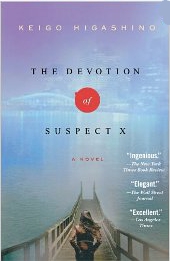
Ishigami lives next door of Yasuko, with whom he is secretly in love – not that she will ever find that out, of course. However, when Yasuko’s abusive ex-husband Togashi shows up at her apartment and in an unexpected outburst of violence is killed by her, Ishigami senses his chance and offers his help. Days later, a body found at the old Edogawa river is quickly identified as Shinji Togashi. Naturally, his ex-wife is questioned, but her alibi is sound. But somehow, detective Kusanagi of Tokyo Police is not satisfied, and he turns – yet again – to his friend Prof. Yukawa for assistance.
In a strange coincidence, it turns out that Yukawa and Ishigami were classmates at University; the former a gifted experimental physicist, the latter a genius mathematician. Soon, solving the murder case changes into a battle of minds and wits, and there can only be one to answer the question: “Which is harder: devising an unsolvable problem, or solving that problem?”
This is perfect light reading for summer time. While Yasuko has commited murder, it was done in self defence, and one cannot help pitying her throughout, especially when Ishigami starts weaving his web. Ishigami, the shrewd math teacher, is in fact the main and most interesting character. He devises a cunning plan to help Yasuko and from then on pulls the strings from behind. I could not even guess at the solution of the mystery, and when it comes on the last few pages it arrives as a shocking surprise.
Get The Devotion of Suspect X from amazon for a chilling summer read.
Journey Under the Midnight Sun
Osaka, 1973. In an abandoned building in a poor part of town, a local pawnbroker is found stabbed to death. Although the investigation is able to zero in onto a prime suspect – the man’s lover – the case cannot be solved and is put on ice. But inspector Sasagaki is not deterred and keeps a watchful eye on Ryo, the son of the pawnbroker and on Yukiho, the daughter of his suspected mistress.
Over the years, Yukiho turns into a mesmerizing and independent woman, and Ryo becomes a small gangster involved in computer crime before he disappears without a trace. Only 20 years after the murder, inspector Sasagaki is finally able to tear apart the web of deceit that surrounds Yukiho and Ryo and finally finds out who and what was behind the murder.
Another fascinating novel by Keigo Higashino with a startling twist near the end. We follow the two children at the periphery of the murder from their teens to their early adulthood, and although they never seem to meet openly, there are too many coincidences in both their lives not to believe in an ongoing connection. What starts out as a strong bond of friendship between them is soon brimming with criminal energy, both out in the open and hidden in the dark.
Get this great summer read on amazon before heading to the beach.
Malice
Bestselling author Kunihiko Hidaka was found murdered in his office by his wife and his old friend, Osamu Nonoguchi. Detective Kaga, who happens to be an old acquaintance of Nonoguchi’s, investigates the case and thankfully, the murderer is quickly found. All the evidence that is subsequently revealed seems to corroborate the motive as the murderer explains it, but detective Kaga is not satisfied. Thus begins a search for the true motive behind the killing, which sends Kaga back to the past of Hidaka and Nonoguchi – as well as his own.
This is not your typical whodunnit, but more of a whydunnit. After about a quarter of the story, the murderer has been found. However, the motive he reveals is nothing but a smokescreen erected to slander the victim beyond his death, and the real “Why?” comes to light only at the very end. While I know that people can go to great lengths to destroy an enemy, I found the fabricated motive too far-fetched, and the denouement of the real one at the end somewhat disappointing, although it was quite chilling. But maybe I’m just too much of a goodie two shoes…
Find out why the writer was killed and get Malice from amazon.
A Midsummer’s Equation
Hari Cove is a sleepy resort town that has seen better days. The most exciting thing happening at the moment is the plan for underwater mining just off the coast, which has divided the people still living there and is the reason that physicist Prof. Yukawa is in town. But after one of the mining company’s meetings, a man is found dead and is later declared murdered. He turns out to have been a retired policeman from Tokyo, and thus Yukawa is drawn into the case. He finds himself unveiling a well-kept secret and, against his usual inclinations, must consider protecting the guilty – not just of this crime, but of another one from many years before…
Another first class crime novel by Higashino. I loved the twists and turns that brought me from Hari Cove to Tokyo and back again, and back and forth in time for more than 20 years. As usual in a Higashino novel, what really happened is only revealed on the last few pages and comes as a surprise. However, when reading the novel carefully (or a second time), you cannot help wonder if Yukawa hadn’t figured out everything right from the start already.
If you’re keen on solving a Midsummer’s Equation in your own holidays, this book is available on amazon.
Newcomer
When a woman is murdered in Tokyo’s busy Nihonbashi district, newly transferred detective Kaga is assigned the case. His sharp observation skills and relentless questions lead him through the woman’s neighbourhood, which is filled with little, old-fashioned shops. Many have been there for generations, and Kaga uncovers a number of their owner’s carefully kept secrets. But which ones are pertinent to his case? It turns out that the murdered woman, who had only recently moved to that neighbourhood, had some secrets of her own…
This is another one of Keigo Higashino’s masterful mysteries, but this time it’s told from the perspective of the people of the neighbourhood, as detective Kaga is coming around and asking questions. We peek into their lives and follow what’s going on right behind the old shopfronts, where not everything is what it seems but deserves a closer look. I love Higashino’s mysteries, I feel that he comes up with something new in every book.
Newcomer is set in Tokyo in the sweltering heat of summer, so if you need something suitable for beach reading, you can get it from amazon.
Salvation of a Saint
Yoshitaka Mashiba is found dead in his livingroom. Soon it is clear that he was poisoned by his arsenic-laced coffee, and when it transpires that he had an affair with his wife’s assistant, the prime suspect is logical: Yoshitaka’s wife Ayane. But since she had spent the weekend of the murder in Hokkaido with her parents, she could not possibly have committed the crime. Detective Kusanagi is quickly convinced of her innocence and tries to find another suspect, but his young assistant Utsumi is not so sure. And when she sees that Kusanagi is falling for the beautiful Ayane, she calls on an outsider to help prove her suspicions and solve the case.
This is another of Higashino’s crime novels featuring detective Kusanagi and his old friend Prof. Yukawa. Although not on speaking terms at the moment, Yukawa is intrigued by the ostensibly perfect crime that has been committed and agrees to help Utsumi.
A practically perfect crime, meticulously planned and executed. Once again, the denouement happens in the last few pages, and reading about the victim’s background and the murderer’s motive, I could not help thinking “he had it coming”.
Plan your next revenge with Salvation of a Saint from amazon.
Saikaku IHARA
Ihara Saikaku (1641 – 1693) was a citizen of Osaka, then as now one of Japan’s commercial centers with a thriving population. He was one of the first to write exclusively of the chonin, the townspeople and their (love) affairs, and he was extremely popular among the people.
Contemporary writers found his style less appealing: Basho famously thought Saikaku’s style vulgar and uninspired, for example. In any case, Saikaku was very prolific and known for his marathon poetry performances, where he composed hundreds of poems on the spot. The “Five Women Who Loved Love” were published in 1686 and remain one of his most popular pieces.
Five Women Who Loved Love
These are five novellas about (forbidden) love from 17th century Japan.
Seijuro in Himeji loses his father’s (financial) support and, instead of spending his time in the local pleasure districts, has to find serious work. There, he promptly seduces his master’s daughter Omatsu…
The Barrelmaker Brimful of Love tells of a happy marriage between two people from its beginning to the tragic end of Osen and her lover…
What the Seasons Brought the Almanac Maker is another happy marriage destroyed by an adulterous prank, this time instigated by Osan, the wife…
The Greengrocer’s Daughter with a Bundle of Love meets a dashing young man after a fire burned down her house. When Oshichi loses sight of him, she is ready to commit a serious crime to see him again…
Gengobei, the Mountain of Love, is a samurai from Satsuma who only loves young boys. Enter Oman, who is determined to change his ways for her own happily ever after.
These five stories are filled with eroticism, even though they are quite tame from our modern perspective. What makes them special – groundbreaking in fact, when they were written – is the detailed depiction of the life and affairs of Japan’s lower class townspeople in the Edo period. At that time, having an affair outside of one’s class (in general: with a higher-class woman) was forbidden and punishable by death. Yet, four of five women carry on such affairs regardless, and seem to take their inevitable punishment in their stride.
All five stories are based on real events that often happened just a few years earlier. This familiarity to the readers may have been one reason why they were instant bestsellers – the other one being the eroticism – and Saikaku quickly became one of Japan’s best-known novelists and poets of the time.
If you’re in for something … well, not really erotic, but depicting “real” life in 17th century Japan, get this one from amazon.
Yasushi INOUE
Yasushi Inoue (1907 – 1991) was born in Hokkaido and studied history and art at Kyoto University. He started writing at an advanced age, his first short stories were published in 1949, and he received the prestigious Akutagawa Prize one year later. In the 40 years until his death, he was one of the most prolific writers of Japan, who published many short stories, but also full size novels. He is most famous for his accurate historical fiction and is still one of the most read Japanese authors in Germany.
The Hunting Gun
A man who calls himself Josuke Misugi recognizes himself as the figure described in a poem published in a hunting magazine. He writes to the poet and sends him three letters that he received from the three most important women in his life.
Saiko, Josuke’s wife, found out the identity of his long-term lover, and now wants a divorce. In a matter-of-fact way she not only tells him what she has chosen from their property, but also that she had been unfaithful as well for years.
Midori, Josuke’s lover and cousin of Saiko, has been sick for a long time. When Saiko finds out about the affair with her husband, Midori is ready to put a long intended plan into action. She writes a last letter to Josuke and then poisons herself.
Shoko, Midori’s daughter, finds her mother’s diary and is shocked to learn about the affair. Finding it hard to deal with it, she decides to end all contact with both Josuke and Midori.
The three letters tell the story of not only the three women’s, but also of Josuke’s life, and the only things we hear about him are seen from their perspective. The main themes of the novel are love and loneliness, and how the former may lead to the latter.
Of the four people involved, I felt for Shoko the most. Finding her mother’s diary and seeing how she had suffered emotionally for so long, almost leads to Shoko’s own breakdown. To me, her letter is the most distressing of the three, her new and thus still raw feelings are expressed beautifully and perfectly by the author.
The Hunting Gun is a beautiful novel and available from amazon.
The Izu Dancer and Other Stories
This is a collection of four short stories by Yasunari Kawabata (The Izu Dancer) and Yasushi Inoue (the other three). The stories are literary fiction, in other words: Not much is happening, really, but they provide an interesting glimpse into the Japan of the 1950s.
The Izu Dancer was the first story by Kawabata to appear in English; the foundation stone of international fame that eventually led to the Nobel Prize in 1968. It’s about a troupe of dancers from the Izu Peninsula who travel through Japan in summer to make money. The youngest one catches the eye of an equally wandering student, but when he finds out that she’s only 13, he is content with sharing the road only.
The Counterfeiter describes the life of Hosen Hara, a childhood friend Keigaku Onuki. While both show artistic talent from a young age, it is the latter who becomes a famous painter. The former eventually produces forgeries of his friend’s artwork. Inoue asks the question whether this outcome was inevitable.
In Obasute, Inoue traes the legend of abandoning old people on a mountain and relates it to the inner dynamics of a family: Their matriarch has just turned 70 – the age for the legendary abandoning – but at the same time, his younger sister abandons husband and children to pursue her own life.
The Full Moon details the rise and eventual fall of Kagebayashi, who is made president of a company just before the annual moon viewing celebrations. We hear about leechers and hangers-on as well as of his enemies, all this with the backdrop of the harvest full moon. One of them will be Kagebayashi’s last…
Discover Inoue (and Kawabata) and get the four stories from amazon.
The Samurai Banner of Furin Kazan
Takeda Shingen is the daimyo of Kai province in central Japan and one of the greatest warriors of the Sengoku period. Kansuke Yamamoto, although crippled and disfigured, is one of Shingen’s 24 generals since he is an excellent swordsman and a brilliant strategist, and his shrewd ideas win many a battle for his master.
Not only the men are scheming in this period though, the women are their equals if not their betters. Princess Yuu, who wanted to kill herself upon her father’s defeat, becomes Shingen’s concubine, and, through a number of open and hidden plots, she secures the succession of her son as Shingen’s heir.
In the end, Kansuke dies in the battle of Kawanajima in what would turn out to be his greatest victory. Shingen himself however, is ultimately killed by the armies supporting Oda Nobunaga, one of the major players of unification of Japan.
Takeda Harunobu, 1521 – 1573, later named Shingen, was one of the strongest warriors in the Sengoku period, a time of uproar and fighting throughout Japan. The shogunate was very weak at that time, and the hierarchical order broke down, so that anyone who had the power and ability could aspire to lead and rise through the ranks. The banner Shingen carried in his campaigns bore the four characters fu-rin-ka-zan from Sun Tsu’s “The Art of War”, which can be translated as: Be as swift as the wind, as silent as the wood, attack as fiercely as fire, be as composed as the mountain.
The book starts shortly before Yamamoto Kansuke entered Shingen’s services and ends with his death on the battlefield. The main focus lies on the battles that Shingen fought with Kansuke’s help, but we also get some insight into the daily lives of the people of this period. Interesting to see is how Shingen keeps acquiring women as concubines for his pleasure – very much to the dismay of Kansuke, who is devoted to Princess Yuu, maybe even more so than to Shingen.
If you’re interested in historical fiction with lots of fighting, The Samurai Banner of Furin Kazan is for you, available on amazon.
Kotaro ISAKA
Kotaro Isaka, born 1971, is a Japanese author of mystery fiction. He studied law at Tohoku University and after graduation worked as a systems engineer. His debut novel won the 2000 Shincho Mystery Club Prize and Isaka became a full time writer afterwards. He writes novels, short stories and manga, and 12 of his books have been adopted for film or TV so far.
Bullet Train
The Hayate Shinkasen leaves Tokyo for Morioka. A number of extraordinary people are on board, they are all dangerous – and on a mission:
Nanao must steal a suitcase and get off at the next station, but he isn’t the world’s unluckiest assassin for nothing…
Kimura is bent on revenge, but his target, known as The Prince, manages to turn the tables…
Lemon and Tangerine have rescued the son of a crime boss and are supposed to accompany him home, but when the boy winds up dead, they instead must find the killer before they arrive, if he’s still on board…
And while the train makes its way up north, these passengers’ goals become intertwined, and in the end, it’s all about who’s the last one standing.
Talk about a fast-paced thriller – no pun intended! I finished the book within a day. There is no ounce of fat in the narrative, every person, every thing that is introduced has its role to play at some later point. That means, you’ll need to pay attention throughout, but this never becomes tedious or annoying.
Interestingly, although all five main characters were decidedly bad people that I would go out of my way to avoid, I found myself rooting for one – and absolutely despising another.
If I had to quibble about something, it would be the introduction of two new characters close to the end, it felt too much of a “deus ex machina” to me. However, since they brought the story to a nice close and dealt beautifully with my least favourite bad boy, I will forgive the author for doing so.
This particular thriller made it to Hollywood starring Brad Pitt, but it seems that the film has “adapted” the novel quite a bit – the train now goes into the opposite direction, south to Kyoto, for example – so if you’d like to read the original,you can get it from amazon.
Kazuo ISHIGURO
Kazuo Ishiguro was born in Nagasaki in 1954, but moved to Great Britain with his parents when he was five, and became a British citizen in 1982. He has a degree in creative writing and is one of the most celebrated contemporary English writers. In 2017, he received the Nobel Prize for Literature, a fact I was immensely pleased about.
I was not sure whether to put him into the Japanese writers’ category, but some of my Japanese friends say that of the modern writers, his style is probably the most Japanese of all of them.
An Artist of the Floating World
It’s just after WWII and Masuji Ono, a celebrated painter, is in the middle of marriage negotiations for his daughter Noriko. The procedures disrupt his quiet retiree life full with gardening, making house repairs and drinking with old friends in the local pleasure district that is now all but abandoned. To secure a positive outcome for his daughter, Masuji is forced to revisit his past both figuratively and literally in the form of old acquaintances from before the war, and not all of this is as pleasant as he might have wished.
We follow Masuji Ono in the two years from 1948 to 1950, in which Japan makes a rapid jump towards industrialisation, American style. While Masuji is more and more ready to accept responsibility for his past actions of glorifying the war through his art, it appears that the views of his surroundings take the opposite direction, as they are striving to let go of the past and look toward the future.
WWII is still a sensitive topic in Japan, and not readily talked about. Also in school, many parts of the war that are less than pretty are left out deliberately or are heavily censored and sanitised in order to keep the myth of the heroic Japan and Japanese alive. I found Ishiguro’s view from the outside in – as an Englishman with Japanese roots – very interesting and enlightening.
An Artist of the Floating World is an early novel by Ishiguro, check it out on amazon.
Never Let me Go
Kathy is 31 years old, and for the third time her life is about to change drastically: By the end of the year she will not be a carer anymore. So, this is the perfect time to revisit and reminiscence on her life.
The first part of it she spent in the English country side, in the boarding school Hailsham, where she lived from her earliest childhood. There she is one corner of a triangle of friendship, the others being Ruth and Tommy. While Kathy is the most reserved one, Ruth is outspoken and bold and Tommy struggles violently with his lack of creativity.
When school ends the three of them are sent to the “cottages”, an old farm a group of former students from different schools have to maintain. It is kind of intermediate station on the way to adulthood, which Kathy must leave first, leaving Ruth and Tommy, now a couple, behind.
Only years later, when Tommy and Ruth have both become donors, the three see each other again and together they try to at least delay the inevitable…
The book is set in the English country side, and we follow typical British kids coming of age in a Western world. And still, in the way many things about this dystopian world are always present but hardly mentioned, the writing is highly influenced by Japanese culture, where everybody is supposed to know things that remain ever unspoken. At the denouement in the end, when everything falls into place and yet no real explanation is given, you feel like a part of Ishiguro’s world.
So, judge for yourself if Ishiguro should be called a Japanese writer. You can get Never Let Me Go from amazon
Tomotake ISHIKAWA
Tomotake Ishikawa, born in 1985, works in an office as a salaryman like millions of other Japanese. He writes in his spare time and on commutes. In 2011, his debut novel Gray Men won the Grand Prize of the second annual Golden Elephant Award, an open literature award for full-length novels written in Japanese.
Gray Men
Ryotaro has had enough of the relentless bullying at his workplace. As he is sitting on a park bench ready to commit suicide, a mysterious man in a gray suit sits down next to him, claims to be able to see what Ryotaro is up to and convinces him to live just a bit longer. After Ryotaro has helped the man with a jewellery heist in broad daylight, he is introduced to other people who were saved from the brink of death. Together, they are ready to implement and even die for Gray’s plan to destroy the current rule of the One Percent and to give power back to the disenfranchised of society.
This is an extraordinary thriller I couldn’t put down. The things the rich and powerful do – and get away with – are depicted in gory detail at times. And when at the end push comes to shove and Gray threatens to take it all away from them, you see the real lengths they are willing to go through to protect who they are and what they have. You are left wondering how far fiction goes and what might really go on behind those expensive facades.
If you’re in for a quick read (that is a bit disturbing at times), Gray Men is available at amazon.
Hitomi KANEHARA
Hitomi Kanehara was born in Tokyo in 1983, dropped out of school at age 11 and left her home when only 15. Snakes and Earrings was written when she was 21, won the prestigious Akutagawa Prize, and subsequently sold more than a million copies in Japan. She claimed that some of the themes in the book were inspired by her own issues with self-harm. In 2012, she moved to France with her husband and children, where she lived for 6 years before returning to Japan. Kanehara has gone on to write more than 10 books to date, some of which won further literary prizes or were translated into other languages as well.
Snakes and Earrings
19-year-old “not a Barbie girl” Lui meets mesmerizing Ama in a club and moves in with him right away. She is fascinated by his forked tongue, and soon takes the first step to get one herself: Ama’s friend Shiba pierces her tongue. On a whim, Lui decides to get a tattoo as well, and Shiba uses the opportunity to talk her into having sex with him. Lui is torn between the two men, but when Ama’s jealousy explodes, she is forced to take drastic measures. Can she prevent things spiralling out of control?
The unexpected meeting with Ama draws Lui towards the edge of Japanese society, where people experiment with body modifications, choose unorthodox lifestyles, and mingle with underworld types. This book provides an interesting glimpse into a part of society that (prefers to?) remain in the shadows.
I picked up this book because it was recommended, but to be honest, I didn’t like it very much. Although the subject matter reminded me of Ryu Murakami, she’s not a writer of his calibre, and some of the violence and s&m sex scenes were too graphic and drawn out for my taste. Since these occurred fairly early in the book, I wonder if the author wasn’t only after the shock value.
If you want to try something a bit different, you can get this book from amazon. But don’t say I didn’t warn you!
Hiromi KAWAKAMI
Hiromi Kawakami, born 1958 in Tokyo, studied science, taught biology, and wrote short sci-fi stories before her first book was published in 1994. She counts among the most popular authors of Japan. The Briefcase received the Tanizaki Prize in 2001, and has been made into a film.
The Briefcase
Tsukiko is a 38-year old office lady in an undistinguished Japanese company, leading an undistinguished life. One evening, as Tsukiko orders her dinner at a small bar, she is addressed by the old man next to her. Surprised at the approach, she evenutally recognizes him as her high school teacher of Japanese literature. From that evening on, they keep meeting each other – always unplanned – and marvel about how similar they are. Sensei and Tsukiko like the same food and drinks and eat the same snacks to their sake. After a while, they begin to meet on purpose, for short little trips to the local market or to the high school reunion. Their feelings for each other and the perceived unlawfulness of them leads to internal struggles for both. Will they overcome their fears and stop hiding their feelings?
This is a wonderful love story between two soul mates who struggle not only to overcome an age difference of 30 years, but also their own perceptions of what an “appropriate” relationship should look like.
Find out whether Tsukiko and her sensei get together at the end and what The Briefcase has to do with it, get the book from amazon!
The Nakano Thrift Shop
When Hitomi starts working in Mr. Nakano’s store, he tells her right away that they do not sell antiques, but rummage. It is a quiet store and every so often Mr. Nakano goes out with young Takeo to buy now old merchandise. Between old ashtrays, life-size advertisements cutouts, odd ball customers and old vases, affection slowly grows between Hitomi and Takeo. As both have been burnt by love before, their relationship is an awkward to-and-fro, with moments of intimacy and periods of rejection. And all between that, we hear of the women in Mr. Nakano’s life; about his current lover, but also about his ever present sister Masayo and the love of her life.
The Nakano Thrift Shop is the thread that weaves through a number of episodes in the lives of the protagonists, all of them centred on love in one way or the other. However, the decision of Mr. Nakano to open a real antiques shop in a more upscale neighbourhood tears apart the fragile web between the characters, and leaves a sense of loss in its wake.
This lovely book full of people that are still trying to find their own path in society is available from amazon.
The 10 Loves of Mr. Nishino
The first time we hear about Mr. Nishino is when he suddenly appears in the garden of one of his ex-lovers, and claims that he’s dying. She and her daughter, who knows him as the man who bought her parfait as a child, sit with him and reminisce, until he disappears again as unexpectedly as he has come. This pattern (minus the dying) repeats itself with nine other women of Mr. Nishino’s life who share their own memories of their often brief relationship with this fascinating man, who nevertheless remains elusive to each one of them.
This is not so much a novel than a set of 10 vignettes centred around the main character, Mr. Nishino. From early childhood on, he is irresistible to girls and women, who fall over each other to land in his arms. Yet, even though some of them know he’s double-dating, they still describe him positively, almost as if he couldn’t help it.
Unfortunately, each chapter is written from the viewpoint of the woman du jour, so that the “real” Mr. Nishino never has to reveal himself. And the women themselves function merely as chroniclers of, rather than as participants in, the stories. This left me unsatisfied and none the wiser about any of the characters, and there is no plot either to provide a cohesive whole. I like Kawakami’s books in general, but this was not one of her stronger ones.
I’d recommend getting this from the library, but if you prefer to own your books, here’s a link to amazon.
Yasunari KAWABATA
Yasunari Kawabata (1899 – 1972), born in Osaka, was one of the most renowned Japanese writers and in 1968 became the first Japanese to win the Nobel Prize in Literature. Orphaned at four, he lived with various family members before moving to a boarding house at the age of 17. He started to study English literature, but soon became known as a writer in the early 1920s and quickly rose to fame. Kawabata died under unclear circumstances four years after winning the Nobel Prize, but most people consider his death a suicide. He himself thought of The Master of Go as his finest novel.
Beauty and Sadness
It is December 31st and Toshio Oki is on his way to Kyoto to hear the temple bells ring in the New Year. He is also about to meet his mistress of 24 years ago, Otoko Ueno, whom he hadn’t seen since he left her. Otoko, now a famous painter, unsure about his intentions, comes to the meeting with her young protegé Keiko.
While Otoko has forgiven Toshio all the pain he caused so long ago, Keiko, knowing the story behind the old lovers, is furious about it and is ready to take revenge on him and his family in Otoko’s name. So, Keiko sets out, using her beauty and cunning to ensnare both Toshio and his son Taichiro in her dangerous web. In the end, her plans prove to be deadly effective…
In this novel four completely different characters meet and eventually clash: Oki, whose affair with the only 15-year-old Otoko was the basis of his literary career, and who wants to reminiscence on the past without giving up his present. Otoko, however, who had to start over in Kyoto after he had left her, is content where she is now and prefers to look forward. Keiko, in love with Otoko, is ready to do anything to get the revenge she thinks Otoko wants and deserves. And Taichiro is fascinated by Keiko, but is unsure how to proceed. In the end, Keiko’s determination is strong enough to get her what she wants – and the others can only stand in awe at the distruction her strong will causes.
This is the perfect book to read over New Year, with Kyoto’s temple bells ringing in the background! Even if you’re not in Kyoto, you can still get in the mood with a copy of Beauty and Sadness from amazon.
The Master of Go
The Master of Go describes a single match of Go between the old master Honinbo Shusei and the young Otake of Seventh Rank. We follow the game from the single first stone played on June 26th to the final counting of the score on December 4th. While the novel’s main theme is the match, its focus lies on the characters of the players, especially the master’s. We hear about the reverence he expects (and receives) and how he is able to fully immerse himself in the play, forgetting everything else. During the recesses, however, he appears more human and his illness, which will lead to a three month long interruption of the game, comes to the fore.
The Master of Go is a somewhat fictionalized account of the last match of Honinbo Shusei against Minoru Kitani, where Kawabata was present as reporter for a newspaper. The novel is often seen as an homage to the courteous Old Japan, that must make place, involuntarily but inevitably, for the formal New Japan, where strict regulations take the place of the ingrained behaviour of old. The match itself is legendary and is still used for teaching Go.
Now that computers have finally managed to learn how to play Go, I found it interesting that the book describes a similar culture clash between the retiring master and the young player. Both their characters, their backgrounds, and their dealing with problems on and off the board are described in great detail and bring to life what might otherwise have been nothing more than sports commentary.
You don’t need to know how to play Go to enjoy the novel, promised! You can get The Master of Go on amazon and a number of books to teach you how to play Go as well.
The Old Capital
Chieko is an adopted child, found one winter morning on the doorstep of Shige and Takechiro. Now Chieko is 20 and settled into the life and routines of a kimono wholesaler’s in Kyoto’s Nishijin area. But on a visit to a shrine during Gion festival, a young girl she has never seen before excitedly begins a conversation with her. It is Chieko’s twin sister Naeko who was raised by a poor family in Kitayama after the death of both their parents. Their unexpected meeting brings inner turmoil and outward complications to both sisters. But also the obi weaver Hideo, Chieko’s childhood friend, must choose between the two.
The book is set in Kyoto in the 1950s, and it provides interesting insights into the life of that time, where many people still wore traditional kimono when riding the modern tramway. What I found particularly interesting was the rigid class distinctions that existed between the girls, and which especially Naeko could not overcome – she keeps calling her sister “Miss” every time they meet. In typical Japanese manner the ending is left open, but as Naeko departs from Chieko one still hopes for a happy ending for both sisters.
This was one of only three novels cited by the Nobel Committee for their decision to award Kawabata the Nobel Prize in 1968, and that, although the first (official?) translation into English was published only in 1987. Find out what The Old Capital is all about with a copy from amazon.
Thousand Cranes
Kikuji is on the way to a tea ceremony held by Chikako, who had been his father’s mistress. Over the years, he had received many invitations from her, but since his father’s death, this is the first one he accepts. At the ceremony, he meets Mrs. Ota, who is the total opposite of Chikako, and Kikuji falls for her immediately, just as his father once did. From then on, Kikuji finds himself at the centre of Chikako’s intrigues, and although he is not a born fighter, it is not clear yet who will get the upper hand in the end.
I couldn’t help but feel sorry for poor Kikuji who is torn apart by his feelings for no less than four women: meddlesome old crone Chikako who wants to see him married to Miss Inamura, a nice girl and protégé of hers, and the attractive and still young-at-heart Mrs. Ota and her daughter Fumiko, who doesn’t quite know how to deal with her mother’s strange attraction to Kikuji – or her own.
If you’re up for something melancholy and short, try this one – it’s available on amazon.
Natsuo KIRINO
Natsuo Kirino is the pen name of Mariko Hashioka, born in 1951. She earned a law degree in 1974 and dabbled in different kinds of jobs before starting to write about 10 years later. At first, she wrote romances for women, but as this genre is not very popular in Japan, she turned to mysteries. Although she is very successful as a mystery writer, and even received the renowned Naoki Prize for fiction, she says that she does not like to read mysteries herself. For The Goddess Chronicle, she received the 2009 Murasaki Shikibu Prize for Literature.
The Goddess Chronicle
16-year-old Namima has just – against her will – been ordained to become the priestess of darkness on a tiny island called Umihebi. Obviously not content with her lot of living on the cemetary and watching the dead for the rest of her life, shunned by everybody, she flees with Mahito, her secret lover, who is just as outcast from the island’s society as she is. But when Namima gives birth to their child, she is killed by Mahito, who returns to Umihebi with their daughter. Meanwhile, Namima descends to the netherworld, where, grief-stricken, she becomes a priestess of Isanami, the powerful goddess of Death. Will the goddess allow Namima to return to the world of the living to seek closure – or maybe even revenge?
This is a beautifully tragic story about what women are often expected to bear under the name of tradition, or religion, or simply because they are considered “the weaker sex”. And even so, the women are the important and strong characters here, both in life and in death.
I love this book, I keep coming back to it ever so often. The story of Namima – the priestess of darkness on Umihebi – is based on ancient Okinawan traditions; whereas Izanami and Izanaki are the two gods who – according to the Kojiki – once created Japan. The stories are masterfully interwoven although totally different – and still they have something in common: the female Namima/Izanami has to suffer death, while the male Mahito/Izanagi lives happily ever after – until something unexpected happens…
Find out for yourself what happens to Namima and Mahito and if there is a happy ending after all: get The Goddess Chronicle from amazon.
Takiji KOBAYASHI
Takiji Kobayashi (1903 – 1933) moved to Hokkaido as a small child. He started writing short stories and published them when at university, and at that time he became a member of the labour movement. He turned to write stories and books in support of the labour movement that proved very popular. In 1931, Kobayashi became an official member of the then already outlawed Japanese Communist party, and one year later, he went underground. In 1933 he was captured by the police, tortured, and died while in custody, officially from a heart attack.
The Crab Cannery Ship and Other Novels of Struggle
This book consists of three novellas, all written in the late 1920s/early 1930s. All three concern class struggles, the rising of the working class, and the left-wing movements in Hokkaido.
- The Crab Cannery Ship is a novella about a season of crab fishing near the Russian peninsula of Kamchatka. Neither factory nor ship, local fishermen and other laborers from Hokkaido have to endure unspeakable hardships to feed their families, until, at last, there is an uprising…
- Upon the jailing of her brother, Okei and her mother must move to Otaru to make ends meet. Yasuko, the younger sister works there already, in a small restaurant. When she gets involved with Yamada, a member of the worker’s union, the lives of both sisters change, but whether it’s a change for the better remains to be seen.
- Life of a Party Member is exactly that, the struggles of a member of the left-wing party who is forced into the underground. However, he still keeps up his work to bring people to the socialist movement. It is not clear whether this piece is autobiographical.
The three stories in this book can safely be called left-wing propagandist literature, and the author as a member of the labour movement does nothing to hide it. However, the writing is incredibly vivid and conjures up dreary pictures of the lives of impoverished people. I felt very drawn to the protagonists, and was ready to step in to help, all the while seeing through some of the more obvious propaganda (of course, with almost 100 years of hindsight). The first story was republished in 2008 and became a bestseller in Japan with more than 500,000 copies sold.
If you’d like to read The Crab Cannery Ship that became a bestseller 80 years after it was written, head over to amazon.
Sakyo KOMATSU
Sakyo Komatsu (1931 – 2011) was a Japanese screenwriter who was considered one of the Japanese masters of science fiction. Born in Osaka, he studied Italian literature at Kyoto University and worked at a number of different jobs afterwards. His career as fiction writer started in 1960, and he published his most famous novel Japan Sinks in 1973 after nine years of writing.
Japan Sinks
In a single night, a tiny unnamed island of Japan sinks into the ocean and disappears forever. Nearby, long dormant volcanoes erupt again, one by one, and an inspection of the ocean’s floor at a depth of some 10,000 metres discovers signs of strange, almost inexplicable phenomena. Only Prof. Tadokoro has an idea of what’s going on: Japan – every last one of its islands – will sink into the ocean, destroyed by the same force that once has created it by splitting it off Asia. When evidence mounts that Day X is not more than two years away, there begins a frantic struggle of scientists and the government to make sure the nation of Japan and its people have some way of surviving.
Even though this thought-provoking book was written back in 1973, it does not show its age. Written in a realistic manner that forgoes sensationalist effects, it brings up a number of timeless, interesting questions: What is a “nation” and how important is the actual land on which it was founded? What are the indispensable parts of a culture and how many – and which – artifacts should you try to save facing certain destruction? And how many people are required in one spot to make sure said culture is not doomed altogether?
For more questions, and possibly, a few answers as well, buy Japan Sinks on amazon.
Seicho MATSUMOTO
Seicho Matsumoto (1909 – 1992) was born as Kiyoharu Matsumoto, an only child, in Kyushu. He never finished secondary school, and worked as an adult making layouts for Asahi Shimbun. His first short story was entered in a 1950 competition and won him third prize. Six years later, he had quit the newspaper and worked full-time as a writer and until his death in 1992, he wrote more than 450 works, only a handful of which were translated into English. His detective and crime fiction, where he not only depicts the crime but also Japanese society and its ills, was very popular in Japan. He won the prestigious Akutagawa Prize in 1952, the Kikuchi Kan Prize in 1970, and the Mystery Writers of Japan Award in 1957. He served as the president of Mystery Writers of Japan from 1963 to 1971.
A quiet place

Tsuneo Asai is on a business trip in Kobe when he receives the news that his wife had died. Eiko had had a weak heart, so, while her death was sudden, the heart attack causing it was not exactly a surprise. The circumstances of her death, however, are puzzling: What did she do in that neighbourhood in a part of Tokyo they had never visited before?
When Tsuneo visits that neighbourhood to apologize for the trouble caused by his wife’s death, he notices a number of love hotels on top of the hill. Immediately, the idea that his wife must have had an affair takes hold, and Tsuneo is determined to find out the truth.
This is not your typical “whodunit” crime novel, since the death of Eiko was from natural causes. Still, Tsuneo acts like a sleuth on his quest to unravel his wife’s apparent double life, which makes this a compelling read. Once the truth is found, Tsuneo must make a decision, which turns the story into the direction of obsession and what can happen when you don’t let sleeping dogs lie…
I discovered Seicho Matsumoto through a friend of mine, and these crime novels are well crafted and fun to read. Try for yourself and get the novel from amazon.
Yukio MISHIMA
Yukio Mishima (1925 – 1970; pen name of Kimitake Hiraoka) is considered one of Japan’s greatest authors. When he was 16, he got a story published in a very prestigious literary magazine, the editors of which thought him a genius already. After the war, Mishima was taken under the wing of Yasunari Kawabata. Both of them were considered for the Nobel Prize of 1968, but the elder Kawabata received it. Mishima wrote 34 novels and hundreds of shorter works during his lifetime. The four novels that make up the “Sea of Fertility” cycle were the last books written by Mishima before committing ritual suicide after a failed coup attempt.
Spring Snow (Sea of Fertility 1)
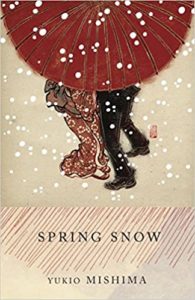
Japan 1912. The Meiji era has just ended, and the old ranks of aristocrats are slowly giving way to a new class of rich people who are staking their claims at the top of society. Kiyoaki Matsugae, of lower samurai class, has been raised by the aristocratic Ayakuya family, together with their daughter Satoko, who is two years older. Kiyoaki’s complex feelings for Satoko eventually blossom into a tender young love, which is destroyed because both lovers avoid being open with each other. Only when Satoko is promised to an Imperial Prince do they recognize what they are about to lose, but now it is too late for a happy ending…
This is one of those romances where you’d like to slap both parties and force them to speak to each other. Much pain would have been avoided. And yet, Mishima draws a detailed picture of the time with all the scheming going on so that the Matsugaes can advance their position and the Ayakuras can at least keep theirs.
I greatly enjoyed this book; the romance between the two youths is only a part of it, which is growing in importance towards the climax. I loved the insight into Japan of the early 20th century, and Mishima once again is able to draw up splendid pictures in your mind’s eye. It’s available from amazon.
Runaway Horses (Sea of Fertility 2)
Japan, 1932. Isao is a youth who lives and breathes the ancient samurai spirit. He is worried about the modern Japan that he sees in the hand of greedy industrialists instead of that of the benevolent emperor. Spurred on by a book bout a group of rebels in the early Meiji era, he forms his own “League of the Divine Wind” with 20 of his best friends. Supported by high-ranking men in the military, they set out to kill the country’s business elite and to restore the purity and integrity of Japan under the emperor.
This book tells of a fanatic group of young men in their early 20s who see the greatest honour not necessarily in killing, but in dying for a cause they believe just. Ideas of nationalism are expounded in detail, which make this book difficult to read at times, in particular when knowing that these ideas led to war just a few years later.
This is the second novel in the “Sea of Fertility” series by Yukio Mishima. Except for a few recurring characters, it can be read as a stand-alone, though.
Not my favourite novel of the four, but if you want to have a go at it yourself, here’s a link to amazon.
The Temple of Dawn (Sea of Fertility 3)
Shigekuni Honda, successful international business lawyer, is called to Bangkok in 1941 to settle a dispute. While engrossing himself in the study of Buddhism, in particular reincarnation, he is permitted an audience with the royal princess Chantrapa. She is the daughter of Honda’s high school classmate and insists that she belongs to Japan. When she recognizes Honda, he believes her to be a reincarnation of the revolutionary Isao whom he had defended years ago, but in the end, he must leave Thailand without proof.
They meet again 11 years later when the princess – now 18 years old and calling herself Ying Chan – comes to Japan to study. Honda is obsessed with the young woman and tries to crack her secret, but Ying Chan avoids him whenever she can, just spurring on the advances and scheming of the lawyer.
The first part of this book, set in Thailand, is heavy with Buddhist teachings that demand quite some attention. In the second part, we can focus on Honda and his desire to find out whether Ying Chan is indeed Isao’s reincarnation. Although some of Honda’s schemes are quite unsavoury, I still felt sympathy for him overall. I feel that Mishima is at his best when describing land- and cityscapes, and I loved the images of Bangkok he could conjure up in my mind’s eye. This is probably the reason why I liked this book more than the “Runaway Horses”, and I myself got very curious about this whole reincarnation business…
This is the third book in Mishima’s “Sea of Fertility” cycle, and it centres on Honda, who has hitherto been a mere side character. There were so many references to Isao, the protagonist of the second book, that it would be hard to follow without having read “Runaway Horses”. If you’re interested in a deep dive into Buddhism and the practice (or art?) of reincarnation, you can get this book at amazon.
The Decay of the Angel (Sea of Fertility 4)
Japan, 1970. Former judge Honda is 75 years old and long retired when he meets Toru by chance. The teenage boy bears three moles that make Honda believe that Toru is another reincarnation of his school friend Kiyoaki. Honda sees another chance to prevent Kiyoaki’s/Toru’s premature death, and he decides on the spot to adopt the orphan.
But Toru could not be more different from Kiyoaki. He has a malicious streak and joyfully seeks to thwart Honda’s best intentions. He gets one of his tutors dismissed, destroys a proposed marriage and abuses the maids. Things only escalate when Toru becomes a legal adult, and he now gets violent towards Honda as well. However, when his presumed former lives are revealed to him, and that he may be a fraud after all if he survives his 20th years, Toru cannot accept this. Clearly upset, he makes a drastic decision that changes his life for good
This is the last of the four books of the “Sea of Fertility” and the one I liked least. Toru is, quite frankly, an asshole from the very beginning. In “Runaway Horses”, I didn’t care for Isao’s nationalistic views, but he honestly believed that he’s doing the right thing. Toru, on the other hand, has no redeeming qualities, he is mean because he can. Interestingly, it seems that Honda can see through his facade also from the beginning, and yet, he doesn’t do anything to address the issue, not even when he stops believing in his reincarnation theory.
Overall, the book is worth reading, though – Mishima was indeed a great writer – but you may need the other three books to understand some of the references, and the ending in particular.
Follow Mr. Honda through the last years of his life and get this book from amazon.
Death in MIdsummer and Other STories
- The Priest of Shiga Temple and His Love
Heian period. And old, saintly priest catches a glimpse of the Great Imperial Concubine of Kyogoku. He immediately becomes infatuated with her and experiences once again feelings he had long thought conquered. He believes that all he needs to cure himself is a single meeting with her… - Onnagata
We delve behind the kabuki stage and see the actor Mangiku through the eyes of his assistant Masuyama. Mangiku is an onnagata who specializes in female roles, and like many a drag queen, he is more attractive than a women. But what does Masuyama see in Mangiku? - Patriotism
Just after the February 26th Incident, a young lieutenant of the Imperial troops is shocked to find that his closes colleagues are implicated in the mutiny. Worried that they might meet on opposite sides on the battlefield, he prepares for his ritual suicide – and his wife of six months with him.
Nine stories of various lengths are collected here, plus Dojoji, one of Mishima’s modern Noh plays. The stories that stood out to me are:
Yukio Mishima is a fantastic writer, and even in translation, he creates images in the reader’s mind that put him directly next to the protagonist of the story. “Next to” is important here, because I feel that Mishima stays on the outside of his characters, a mere observer who doesn’t get emotionally invested. Whether this is by conscious choice or due to his own character, I do not know, it’s definitely not because of a lack of talent.
While Mishima is unequivocally lauded as exceptional author, as a person, he is more controversial, at least in Japan. The story “Patriotism” can be seen as a foreshadowing of Mishima’s own death: The staunch nationalist committed ritual suicide in 1975 after a failed attempt at a coup d’etat.
Discover more Mishima with this book from amazon.
Haruki MURAKAMI
Haruki Murakami is probably the best known contemporary Japanese author. Born 1949 in Kyoto, he studied drama in Tokyo and afterwards managed a Jazz club in Tokyo. After a kind of epiphany at age 29, he started writing, and has since become one of the most acclaimed writers world-wide. Even though many Japanese critics don’t like his work because they see it as “too Western”, he has won numerous prizes in Japan as well as abroad.
After Dark
It’s midnight in Tokyo and once again, Mari doesn’t want to go to bed, doesn’t even want to go home. A regular late customer, she sits in a Denny’s cafe reading when Takahashi enters, a trombone case slung over his shoulder. He recognizes Mari from a date some years prior and sits at her table for a while before he leaves for his band practice. Mari is alone again until Kaoru, the manager of a nearby love hotel, storms into the place and asks Mari for help. A young Chinese prostitute has been assaulted in her hotel, and she needs an interpreter. Mari follows Kaoru into the night, and soon she is enveloped in the weird stories that happen after dark in the big city.
Three stories are being told in this book: The one of Mari and Takahashi, of Kaoru and what’s going on in her love hotel, and of Eri, Mari’s beautiful sister, who, like Snow White, has been sleeping for a very long time… The three stories don’t form a single whole, but like the myriad of rail tracks in Tokyo, only cross and touch each other at intervals, while in general they run independently.
Follow Mari into Tokyo After Dark and check out the book on amazon.
The Colorless Tsukuru Tazaki and his Years of Pilgrimage
Tsukuru Tazaki is an engineer in Tokyo who is living his dream: building railway stations. Recently he started to see Sara, a travel agent, and as they get closer, Tsukuru opens up and tells her a secret: 16 years ago, when he was a student, the tight-knit group of friends he belonged to in highschool abruptly and without explanation cut off all ties to him. Sara urges him to find closure, and he agrees to visit his four friends in Nagoya and get to the bottom of the issue. Tsukuru returns to his old world of friendship, dominated by unwritten obligations to protect the weakest member under all circumstances…
The novel’s title is an allusion to the names of the five friends: All except Tsukuru’s last name contain a color: red, blue, white, black. Murakami draws an image of deep friendship among the five highschool students which is destroyed forever on outcasting one of them, who, for lack of understanding, is reduced to utter despair that lasts for years.
If you haven’t read The Colorless Tsukuru Tasaki yet, get it from amazon.
The Elephant Vanishes
This is a collection of 17 short stories by Haruki Murakami. They don’t have a common theme, but they are all tied together by an “I” narrator, which gives the stories an almost personal feeling. Most often, this narrator seems like a stand-in for Murakami himself (a male author talking about his past), but there are also stories told from a female perspective. Typical for Murakami, in the beginning, the stories are grounded in the real world until something happens that is unlikely or impossible:
A man searches for his wife’s cat and spends the afternoon lying in the sun in a stranger’s garden. A woman becomes an insomniac who does not need to sleep at all and doesn’t even feel tired. A man works in an elephant factory until a dancing dwarf takes possession of his body. A woman is the target of a love sick green monster. A couple robs burgers from a MacDonalds in the middle of the night. An elephant vanishes without a trace from a heavily guarded enclosure. A man talks about his desire to burn down barns.
I’ve been reading a lot of Murakami’s books and short story collections lately. The selection of stories in this book felt more coherent than in “After the Quake”, which I read just before this one, even though there was no common theme here. The stories range from light hearted to cruel, from funny to profound. Since Murakami writes literary fiction, there is often not much plot, but the insights into the characters makes up for the fact that not much is happening.
If you need something to take your mind off things without having to commit to a long time of reading, The Elephant Vanishes is a good choice. Available at amazon.
Norwegian Wood
In the 1960s, Taru Watanabe is a student at a private university in Tokyo who lives the average life of an average student: some parties, some studies, some music, some girls… But then Naoko re-enters his life, a girl he knew from school. Taru had a crush on her then, but she was the girlfriend of his best friend Kizuki and thus off-limits. Now however, Naoko is free, and they rekindle their friendship that soon blossoms into a tender romance. But then Naoko disappears, and despite his efforts, Taru cannot find her.
At this time, he meets Midori, who is the total opposite of the quiet and introverted Naoko. Taru quickly falls in love with the outspoken and demanding Midori, but just as he is ready to commit, a letter from Naoko arrives…
On the surface, this sounds like a typical “man between two women” story, but it’s not quite that straightforward. Taru loves Naoko deeply, but her inner troubles don’t permit a relationship. Midori on the other hand is open and available – which makes her scary in another way. Will Taru be able to choose in the end?
For everybody who would like to relive young adult angst in and about love, get Norwegian Wood on amazon.com.
Novelist as a Vocation (Non-fiction)
Haruki Murakami ranks among the best known contemporary Japanese authors. In more than 30 years, he has written 14 novels, a number of nonfiction works and countless short stories and essays, many of which were translated into dozens of languages. Despite his status as an international celebrity, Murakami stays mostly out of the limelight, preferring to write books rather than giving interviews.
This book is a collection of 11 essays in which he talks about his path as an author. He explains his views on writing, his audience, literary prizes, and the relationship between mental and physical fitness when it comes to write books. Although some essays have titles like “On Originality”, “What to write about”, or “What characters do I put on stage”, these are not manuals on how to write but rather detail how Murakami himself approaches the craft.
I have read this book a few years ago in a German translation (Von Beruf Schriftsteller). While I like Murakami in general, that translation doesn’t read very well. He used a lot of “in my view” and “in my opinion” hedging, which may be expected by a Japanese audience, but to me, it seemed a bit arrogant at times. I wonder if the English translation suffers from the same problem. However, if you’re interested in a (partial) autobiography of one of the world’s best-selling authors, you should definitely read this one – get the book from amazon.
South of the Border, West of the Sun
12-year-old Hajime lives in the typical middle class suburbs of a typical post-war Japanese town, in a typical family among other, typical Japanese families. However, in a world where everybody seems to have brothers and sisters, he is an only child. In elementary school, the only friend he has is Shimamoto, new in town, whose father’s job requires her family to move frequently. Soon, the two develop a special bond, based on the fact that both are only children; but despite their attachment they lose touch when Hajime’s family moves.
25 years later, Hajime is a successful businessman in Tokyo, who loves his wife and adores his two daughters. But then, on a rainy night, Shimamoto appears in his Jazz bar, strikingly beautiful, rich, and surrounded by a mysterious air. The two pick up their friendshipas if there had been no interruption, and finally, Shimamoto tells him “You take either all of me or nothing”, and Hajime has to choose between his soul mate and the life he got so used to.
The story follows Hajime – whose name means “beginning” – through many of the beginnings in his life, but the special bond he formed with Shimamoto is never broken. And when she reappears all of a sudden and gives him one more chance to start afresh and live the life he always wanted – well, isn’t that an opportunity we’d all like to have?
See if you agree with Hajime’s decision and get South of the Border, West of the Sun from amazon.
Underground (NON fiction)
In the early morning of May 20, 1995, members of Aum Shinrikyo, a now-forbidden religious cult, released sarin gas on three Tokyo subway trains. However, the deadly nerve gas, conceived in Nazi laboratories in the 1930s, failed to cause the destruction the perpetrators had intended. Yet, the families of the 12 people who died and the thousands of injured – a good part of whom had to deal with varying long-term aftereffects – would disagree with this assessment.
In the course of 1996 when the worse shock over the attack had passed, but memories were still fairly fresh, Haruki Murakami interviewed 62 survivors. Of these testimonies, 34 are contained in “Underground”, a shocking account of how a normal Monday commute turned into a nightmare for many, touching on emotions that were still raw a year or more after the attack.
This edition of “Underground” also contains a part 2, titled “The Place that was Promised”, a collection of 8 interviews with (former) members of Aum Shinrikyo. While most of the victims expressed a hatred toward Aum, these interviewees were torn in their views. Most of them initially joined the group because they felt alienated by the world around them or tried to fill a (spiritual) void in their lives.
Even though they had a spiritual home in and were completely devoted to Aum, they declared that had they been asked to carry out the attack, they would have declined. Only one said that he would have gone through with it “if I had been asked by the right person.”
This raises the question – and Murakami addresses it in his own reflections on the topic – how far each of us would be willing to go for “the right person” or “the right cause”. On average, as history shows: all the way down to the inner circles of hell.
For a first-hand account into one of Japan’s deadliest terrorist attacks in peace time. I recommend this particular edition for a view of both sides; they are equally chilling but for different reasons. It’s available on amazon.
What I Talk About When I Talk About Running (non fiction)
This book delivers exactly what its author says in the foreword: “This is a book in which I have gathered my thoughts about what running has meant to me as a person.”
It was written between summer 2005 and autumn 2006 and comprises nine essays, written in different places and about different races – marathons and triathlons – and the training that went into them. Yet, the essays are not just about running, but are also a memoir about writing and how Murakami became a writer in the first place. His early life as the owner of a music bar was especially interesting; his love for music is undiminished as can be seen in his novels that all seem to have at least one character obsessed with music.
Overall, I’m not sure what to think of this book. I am not a runner and not much of a writer myself, which probably explains a certain detached interest. Murakami is also not very good when writing about himself. He seems to be more at ease in the role of a (self-) chronicler, preferring to keep his deeper thoughts to himself.
Certainly, the subject matter of long-distance running doesn’t lend itself easily to deep philosophical insights, but I also think that the vertical pronoun throws Murakami’s prose off somehow. At least all the “in my opinion’s” that were so obnoxious in his book on writing above are less numerous here, which makes him sound much less pompous and more human.
I don’t regret having read this book, but had I not done so, I wouldn’t have missed much either. Try it out for yourself on amazon.
Ryu MURAKAMI
Ryū Murakami, born in 1952, is the enfant terrible of Japanese artists. He started his artistic career as a member of a number of bands, before he moved on to film and eventually writing books. His first book was written when he was still in high school, immediately winning him the acclaimed Akutagawa Prize for fiction, and becoming a bestseller in Japan. Most of his works centre around the dark side of humanity, they describe sex, violence, drug use, and the abysses of the human soul in general very graphically, this Murakami is not for the faint of heart, so be warned!
Audition
It’s been six years since Ryoko’s death, but Aoyama is not even dreaming of dating, lest marrying again. Only when his teenage son Shige starts urging him to find a new wife, is he willing to give it a try.
When Aoyama tells his friend Yoshikawa about his plans, the film director is all ears and sets up an audition to find his friend not just any, but the perfect wife. The whole scheme is skillfully disguised as the well-publicized search for the main female character in an upcoming movie. Of the thousands of applicants, young Asami captures Aoyama’s heart at first sight, and they soon begin dating, despite Yoshikawa’s warnings, who feels that there is something wrong about her.
And indeed, at first, everything seems perfect, but how far is Asami in her desire for love – undivided one, that is – willing to go?
I have read a few of Ryu Murakami’s novels, and this one is an easy introduction to his works. The book starts out with a desperate man trying to find love again – and succeeding fairly quickly, to his great delight. Soon, however, a feeling of danger is creeping into the story, and the finale – very typical for Ryu Murakami – is drowning in blood…
If you dare taking part in this Audition, get the book from amazon!
Coin Locker Babies
When Kiku and Hashi meet at an orphanage, the two boys quickly bond and become friends, because of their shared history: Both were abandoned by their mothers in coin lockers at train stations in Tokyo. They are adopted by parents from a rural village where they grow up together, but at all times they keep harbouring the wish of finding their mothers. As young adults, both leave the village and return to Tokyo where they end up in Toxitown, an abandoned plot of land within the city where outcasts, criminals, and other lost cases end up. Hashi eventually escapes to become a successful singer, but in the end, Kiku’s destructive tendencies will catch up with both boys.
An interesting story of two boys looking for the love of a mother they never knew. While each of them seemingly finds their own solution to the feeling of loss, in the end, they both succumb to violence and self-destruction. It would not be a book by Ryu Murakami if they didn’t…
If you want to try anyway, Coin Locker Babies is available on amazon.
Sayaka MURATA
Sayaka Murata, born in 1979, is a renowned Japanese writer. She started to write her first novel in elementary school, which prompted her mother to buy her a word processor. By now, she has written 11 novels, already her first won the Gunzo Prize for New Writers. Subsequent books were nominated for the Mishima Yukio Prize, which she won at her fourth nomination. Convenience Store Woman won the prestigious Akutagawa Prize and was her first book to be translated into English. Throughout her writing career, she kept working part-time at a convenience store.
Convenience Store Woman
There is something odd about Keiko Furukura. She has few friends, no hobbies, doesn’t care about food and often takes things literally. Her family members have long given up on “making her normal” and mostly let her live her life. Keiko’s life is simple and centres on her part-time work in a Tokyo convenience store. The daily routines ground her, and she takes social cues like speech or dress from her coworkers.
Things change when Shiraha starts working at the store. In his mid-thirties, he only wants to find a wife but is continually disappointed. When he gets fired for stalking a customer, Keiko suggests a relationship of convenience. Shiraha is pleased at first, but then he forces her to choose between him and her work…
This novella (165 pages) showcases the fringes of society. Keiko seems to be somewhere on the autism spectrum, she is socially inept, and we hardly hear about her life outside of work. However, she is content with her life as it is, and her coworkers value her.
Shiraha on the other hand is a university dropout and incel who wants to get back at society by mooching off of it. I hated him with a passion (what woman wouldn’t) and felt sorry for Keiko who believed he would be her ticket to a normal, society-approved life.
Delve into her world filled with interesting people and get Convenience Store Woman from amazon.
Keiji NAKAZAWA
Keiji Nakazawa (1939 – 2012), manga artist and writer, was born in Hiroshima and survived the atomic bomb attack together with his mother. He moved to Tokyo in 1961 and started to write about his experiences in Hiroshima after the death of his mother in 1966. Barefoot Gen is considered his masterpiece; it was turned into animated as well as live action movies and was translated into many languages. Nakazawa died from metastasized lung cancer.
Barefoot Gen (A manga)
Gen Nakaoka is a boy from Hiroshima. He is six years old and goes to school where he has friends and foes, of course. Gen is a normal but a bit mischievous boy and sometimes gets himself and his poor parents in trouble. As we follow Gen and his family through the early summer, this could be a nice kid’s book.
But it isn’t. It is the summer of 1945, and the Japanese troops fight all over the Pacific islands. Gen is excited about the war efforts – other than his father – and he cheers when his big brother goes off to join the Navy – other than his father.
And then, on August 6, 1945, the US air force drops an Atomic Bomb onto Hiroshima. Thousands are killed in an instant, and although Gen and his mother survive, they cannot save his father and younger siblings, who are trapped beneath their house and die in the subsequent fire. From there, we follow Gen, his mother, and his baby sister, born only hours after the bomb fell, through Hiroshima where they meet other survivors who just try to figure out what to do next…
Barefoot Gen is a series of manga that describe in a very graphic way the life of an average Japanese family until the atomic bomb attack and the horrifying aftermath including the American occupation until about 1947. First published as magazine serial from 1973, Barefoot Gen was published in book form from 1975. There are 10 volumes altogether.
Check out the manga Barefoot Get – or better, the whole series – from amazon
Fuminori NAKAMURA
Fuminori Nakamura, born in 1977, is a Japanese writer. He published his first novel “The Thief” in 2002 and won three prestigious literature prizes within three years, one of them the Akutagawa Prize. In 2010, he won the Kenzaburo Oe Prize. A translation of “The Thief” was selected among the best 10 books of 2013 by the NY Times. Out of his 15 books, 7 have been translated into English so far.
Last Winter, We Parted
A writer – whose name we never learn – has taken a commission to write a book about Judai Kiharazaka. The famous photographer has been convicted of burning two young women alive, and the writer interviews him to understand the motive. Kiharazaka is reluctant to open up, but the more the writer learns about Kiharazaka’s background, a more obsessive personality comes to the foreground. However, when his investigations lead him to K2, a group centred on an artist who creates life-sized dolls after the image of dead women, the writer begins to doubt everything he has found out about Kiharazaka so far…
A complicated thriller, written from the perspectives of both the writer and that of Kiharazaka. It comprises interviews, letters, and the writer’s notes and memories, and the plot unfolds slowly and in bursts. The big reveal at the end is a twist so far out there, I doubt that anyone could see it coming.
If you’re in for something different – warning: it’s not a light-hearted read, this one – then you can get it on amazon.
Soseki NATSUME
Soseki Natsume (1867 – 1916) is considered the best writer of Japanese modern history, and he is still widely read today. He was born just before the Meiji Restoration in Tokyo and studied English literature from 1890. He spent two years in England, which he thoroughly disliked, and when he returned to Japan in 1903, he started publishing his works. Today, he is one of the most famous writers of Japan, and Botchan, based on his own experiences teaching in Shokoku, is required reading in school. I am a Cat was among his first published books, and is considered a masterpiece.
Botchan
Botchan is a young mathematics teacher, fresh out of college, and his first assignment takes him to a small school in the countryside. From the first day, he – the Tokyo metropolitan – looks down on everything in his new town, especially his country-bumpkin students. They, however, know how to pay him back in the same coin: by pulling all sorts of pranks in school and cheerfully commenting on his private life. Botchan does not fare much better with his colleagues, and the only one he feels somewhat closer to – Porcupine – is engaged in a silent but fierce battle with another teacher – Red Shirt. Botchan soon sees himself trapped between the front lines of the battle, and while he begins to see Porcupine as a friend, an alliance with Red Shirt will have more long term benefits. At some point, Botchan will have to choose…
Botchan, sometimes translated as “Master Darling” has morality as its main theme, and is still widely read by pupils throughout Japan. It is a fun little book, and the quarrels of the teacher’s room bridge cultures as well as time.
If you’re not afraid to go back to your own years in school, try out this book from amazon.
The Gate
The couple Sosuke and Oyone live at the verge of poverty in the outskirts of Tokyo in the beginning of the 20th century. When Koroku, Sosuke’s much younger brother, is forced to live with them and expects them to pay for his university tuition, the situation in the household goes from bad to worse. By chance, Sosuke and his landlord begin a friendship that may improve the lives of the three young people. However, when Sosuke hears that Oyone’s brother, for whose misfortune he believes to be responsible, is back in town, this might mean that they once again must leave everything behind and settle elsewhere. To clear his thoughts, Sosuke goes on a visit to a Zen monastery in the mountains…
A beautiful book by Soseki Natsume, although, to be honest, nothing much happens. We hear about the day-to-day life and hardships of the loving couple, but just as with many other Japanese novels, the most important things are only implied. Only more than half through the book do we hear about the reason for Sosuke’s estrangement from his family, for example. Things pick up speed when Sosuke visits the Zen temple, and his struggles with the unfamiliar life are depicted beautifully. What is your answer to this koan, posed to Sosuke by the head priest: “Your original face prior to your parent’s birth – what is that?”
Soseki considered “The Gate” his favourite novel, and you can get it on amazon.
I am a Cat
The cat in question, which has not been named, lives in the house of a schoolteacher, Mr. Sneaze, a somewhat stingy and definitely dyspeptic man with a wife and three children. As soon as the cat arrives at this household, it begins to quietly observe his master and the friends that come to visit: Mainly Coldmoon, a former student of his master and now looking for a wife, and the rich Waverhouse telling his stories, whether true or false. The cat is always there, occasionally taking matters in his own paws, but mostly observing from the background and commenting on the three men and the things that happen to and around them.
The cat’s observations are pointed and witty, sometimes scathing, and always come from a somewhat aloof position. This way, the reader is presented with an interesting picture of humanity in general, and those living in Tokyo of the Meiji period in particular, where Western influences creep into Japanese culture and make for an especially interesting mix.
I am not entirely sure what to think of this book, and I have read it twice now. It has been written as a series of short stories that appeared in a magazine. The first story is hilarious, and its success prompted the author to write more stories about the nameless cat. The stories can stand alone, but there is a common arc throughout, which would have been better if the book had been planned as such from the outset, I think. And towards the end of the book, the cat (or rather: the author) loses himself in long and rambling philosophical meanderings, which are sometimes hard to follow.
Get I am a Cat from amazon and let me know what you think!
Kenzaburo OE
Kenzaburo Oe was born in 1935 in a small village on Shikoku. When he was 19, he started to study French Literature at Tokyo University, and in 1957 he began publishing his own stories. In 1994 Oe won the Nobel Prize for Literature, as the second Japanese after Kawabata. He was a main figure of Japanese literature and until his death in 2023 was also very active in pacifistic and anti-nuclear movements.
Death by Water
Kogito Choko, renowned Japanese writer with dozens of literary awards to his name (including the Nobel Prize) is suffering from writer’s block. Suddenly his sister calls, offering him access to an old red trunk that is known to hold documents and letters of their father, who drowned when Kogito was a small boy. Excited to finally be able to finish the “Drowning Novel” about his father that he had begun decades earlier (to the dismay of his mother), Kogito decides to visit their old family home in Shikoku and to write what he believes will be his final novel and his masterpiece.
The disappointment starts when the red trunk turns out to be devoid of anything useful as his mother had destroyed every important letter before her own death. Only at the end, with the reappearance of an old family friend, things seem to look up again…
This is a very, very slow book with lots going on that does not drive the plot forward. For example, there is an amateur theatre group who wants to stage all of Choko’s novels, and a lot of time and space is devoted to them. The parts where Choko has troubles connecting with his disabled son – obviously autobiographic – are touching, but add to the feeling of “where is this going?”
Anyway, Oe didn’t get the Nobelprize for nothing, so if you are more the literary type, judge for yourself and buy your own copy of Death by Water from amazon.
Hiroshima Notes
At 8:15 in the morning of August 6th 1945, the first atomic bomb was dropped on Hiroshima, immediately killing about 100.000 people. Twenty years later, from 1963 to 1965, journalist and writer Kenzaburo Oe travelled multiple times to Hiroshima where he visited hospitals, talked to survivors, and witnessed first hand the ongoing struggle of the citizens to deal with the aftermath of the bombing.
This book consists of seven essays written in these two years. Oe talks about such diverse topics as the fighting between different Japanese charities dedicated to help the victims; the marginalisation of the survivors suffering from radiation sickness; their own shame and guilt of being sick; but also the dignity these people are exhibiting regardless, up to their very last days.
This book is one of the few where a Japanese view on the Hiroshima bombings is exhibited, and with only 20 years after the facts it is a relatively early account. Although Oe should be one to understand the sentiments of the people he is talking to, one can feel that he is struggling greatly with what he hears and how he should interpret it, how he should make sense of it all. It is not an easy book to read, especially for somebody who is not familiar with Japanese culture, but still, if you are ready to delve into a book that will certainly provoke mixed feelings, it is worth it.
Check out Hiroshima Notes on amazon.
Yoko OGAWA
Yoko Ogawa was born in 1962, studied at Waseda university, and became a medical university secretary. After her marriage, she quit her job and, unbeknownst to her husband, began writing. She won the Kaien Literary Prize for her debut novel n 1988, and has since written more than 50 works, both fiction and nonfiction. She has also won many prestigious literary prizes, among them the Japanese Akutagawa, Yomiuri, and Tanizaki Prize, as well as international awards.
The Diving Pool
This short book is a collection of 3 novellas:
The Diving Pool
Teenage girl Aya falls in love with Jun, who lives at the Light House, Aya’s parents’ orphanage. Every day after school, she watches him as he trains for a diving competition. Aya dreams of getting closer to Jun, but is unaware that he knows her darkest secret…
Pregnancy Diary
An unnamed woman meticulously records her sister’s pregnancy in a diary. She is happily fulfilling all her sister’s cravings for food, especially that for grapefruit jam, freshly boiled. But maybe, there is something sinister behind the ostentatious caretaking…
Dormitory
A young woman sets up her housing in her old university dormitory, which is slowly but inexplicably falling apart. With her husband overseas, she feels bored and finds herself taking care of the dormitory’s elderly manager. He believes that his life and the dormitory’s deterioration are linked, but what is really hiding within its walls?
I enjoyed reading the stories, and Yoko Ogawa is a master of words and vivid imagery. All three stories seem pleasant enough at first glance, but underneath the glossy surface lurks a darkness that only waits for a single moment of inattention…
Look behind the scenes of human nature with this book – get it from amazon.
Hirotada OTOTAKE
When Hirotada Ototake was born in 1976, he was one of only seven people worldwide with tetra-amelia syndrome. Throughout his life he insisted on leading a normal life as much as possible despite his handicap. He worked as a schoolteacher, TV presenter, speaker, writer, and presently lives in Tokyo.
No One’s Perfect
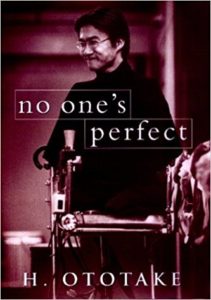
In Japan, everything has to be just perfect, so there are rules for everything: How deep to bow, how to answer the phone, how to dress, in short, how to live. Everything has to be just so, and not any other way, and if you dare to be different, you practically make yourself an outcast.
Hiro is most certainly not perfect. He was born with tetra-amelia syndrome, a rare gene defect that caused him to be born without arms and legs. But he is no outcast. The first thing his mother says to him when she first sees him – three weeks after his birth and hitherto unaware of his condition – is “He’s adorable”, and Hiro takes it from there.
He visits normal schools and tries to do what other kids do, and his favourite subject is PE, where he signs up for basket ball, runs laps, and takes part in the sport meetings like all the other kids. He is always outspoken about what he wants and often ends up as the leader of various groups. Only when at university, he decides to do what no one else can do: campaign for a barrier-free world. And this is what he is still doing today.
This book is a fascinating read, because Hiro focuses on what he can do instead of what he cannot do. It is very uplifting to see him so determined, so positive throughout his life. Only a single chapter of the book deals with the difficulties he must be facing every single day, like not having wheelchair access, or not being able to buy a coffee from a vending machine. But he seems to take all this in his stride, and when you read the book you have the impression he lives a life as perfect as can be…
No One’s Perfect is a very inspiring and uplifting book, available on amazon.
Junichi SAGA
Junichi Saga, born 1941, is a doctor in Tsuchiura, a little town northeast of Tokyo. He writes chiefly about the lives of his patients. Besides the biography of the head of a yakuza family, he has written a few other books, among them Memories of Silk and Straw, which was voted Best Book of the Year by the Foreign Press of Japan.
Confessions of a Yakuza
Junichi Saga is a doctor in a town near Tokyo. One winter’s day, an old man comes to his practice, asking for treatment, and a few weeks afterwards, the doctor is invited to Ijichi Eiji’s home, where he begins to tell about his life.
And what a life it was: born in the countryside in the early ears of the 20th century, he finds himself in Tokyo as a teenager and works at a coal- and later at a timber merchant. In 1924, the year after the great Kanto earthquake, Eiji gets to know a local yakuza boss who takes him into his rank and file, and from there, nothing is ever the same. We hear about the internal workings of the gambling places – the only business a respectable yakuza would do at that time – how the system of yakuza brotherhood works, and how to rise in their ranks. We also hear about Eiji’s three times in prison – twice innocently, once for murder – about his short stint in the army, and about his often unlucky dealings with women.
I picked up this book at an airport or other, probably because of the title promising a real-life crime mystery or something like that. The book is nothing like that. Not that Ijichi Eiji’s business was not criminal, but there were no big yakuza wars or standoffs with guns; instead, we hear about a life on the fringes of Japanese society in the first half of the 20th century. As such, I wouldn’t call the book “exciting”, but the story is interesting and worthy of being told.
If you’re interested in the Confessions of a Yakuza, get this book from amazon!
Murasaki SHIKIBU
Murasaki Shikibu (c. 973 or 978 – c. 1014 or 1031) was a Japanese novelist and lady-in-waiting at the imperial court of the Heian period. She is best known as the author of The Tale of Genji, written between about 1000 and 1012. Murasaki Shikibu is not her real name, but has been taken from one of the main characters in the novel.
The Tale of Genji (Genji Monogatari)
He is the son of the emperor’s favourite concubine. As such, he is too far down in the line of succession to every ascend to the throne, so his father removes him completely by making him a commoner and bestowing the name “Genji” onto him. Genji is nevertheless raised in the palace and is almost unanimously loved at court. Growing up, he shows many talents in writing poetry, calligraphy, music, and in charming women of all ranks. His numerous conquests get him banned from court twice. Twice does he have to settle in a remote area, twice even there women fall for his charms, and twice is he reinstated at court after a while. Genji is a lovable character, and although a womanizer, he always takes care of his lovers in one way or the other, even after the end of their relationship. Only the lady Murasaki (meaning purple) can capture his affections throughout her life, and Genji is heartbroken at her death and dies soon afterwards.
Genji Monogatari can be called a biography of a Japanese courtier of the 10th century. Although fictional, it depicts court life in great detail: its intricate politeness (never use personal names), its unbelievable etiquette (unrelated men and women are always separated by screens), and its numerous festivals and ceremonies. The Tale of Genji is considered the earliest and finest example of Japanese literature.
I found Genji Monogatari a worthwhile book, but rather difficult to read, it took me about three months. There is not much going on, it is a biography after all, and the immense number of characters, most of which are never referred to by name, but rather by their ever changing ranks at court, makes the story difficult to follow at times. I have read the unabridged 2001 translation by Royall Tyler with lots of footnotes that help understand the implicit intricacies of the time.
If you have patience for a really, really long book, The Tale of Genji is available on amazon in a number of different translations.
Soji SHIMADA
Soji Shimada was born in 1948 in Hiroshima prefecture. “The Tokyo Zodiac Murders” was his first book in 1981, and it was shortlisted for the Edogawa Rampo Award, a Japanese prize for crime fiction. Since then, Shimada has published numerous books and short stories, including the case books of the two sleuths on which this books focuses. In 2009, aged 61, he received the Japan Mystery Literature Award for his lifetime achievement.
The Tokyo Zodiac Murders
Japan, 1936: The testament of excentric painter Heikichi Umezawa reveals his disturbing fascination with his own daughters. He describes his plan of killing all seven of them and to use the most beautiful body part of each to create Azoth – the perfect woman. Since Heikichi is dead, nobody is taking this seriously – until the Umezawa girls suddenly disappear and their mutilated bodies are found exactly where Heikichi had planned.
Japan, 1976: For 40 years, the nation has been obsessed with these so-called “Zodiac Murders”, but they are still unsolved. Then, amateur sleuth Kazumi Ishioka gets his astrologer friend Kiyoshi Mitarai onto the case. Together, they try to unravel the mystery and follow the leads where they take them – to an unexpected solution and one final death.
The first 24 pages of the book – Heikichi’s testament – are, quite frankly, terribly written, and I struggled to get through them. In hindsight, this was on purpose, though. Because once the story turned to the two amateur detectives, things did look up. It was interesting to watch them decipher the hints, even though the actual solution happens off the page, which I don’t particularly like. However, the final reveal of the by now aged killer and the motive came as a shock to me.
Twice towards the end of the novel, the author inserted himself with notes in which he challenges the reader: “All pieces are in place, can you solve the puzzle?” I didn’t care for that at all, but other people may enjoy this
If you’re in for a locked room mystery with a twist at the end, get this one from amazon.
Sei SHONAGON
Sei Shonagon (c. 966–1017/1025) was a court lady on the Heian court in Japan at about 970 – 1020. She began writing The Pillow Book when she received a book of fine writing paper as a gift, and her diary ends when the paper was used up. Her little vignettes tell of a time long gone and of strange customs that even at her time only a few people were privy to.
The Pillow Book
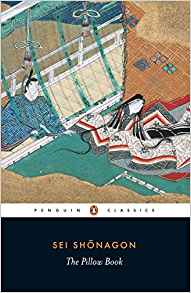
The Pillow Book is hard to describe. It is an ancient diary, not a novel, so there is not much plot. The entries are undated and although there are references to this or the other festival in this or the other season, it is hard to get a feeling of the flow of time. On the other hand, the little entries tell of a time and place so strange, that whatever moved the writer at her time seems to come from an entirely different universe and sounds like fiction after all. The individual entries talk about the routines of daily court life, interesting outings to festivals, and there is gossip of course, about friends, foes, and lovers alike.
The book is very strange, and every time I read it, I feel differently about it. Her stories, although they seem trivial at times, as diary entries are bound to be, still have an eerie way of drawing you in. I don’t know much about the customs of that time, but I wonder what people with a better understanding of them think about this book.
Go find out for yourself and get The Pillow Book from amazon!
Sue SUMII
Sue Sumii was born 1902 in Nara Prefecture. She was an advocate for the burakumin and devoted her entire life to breaking down barriers for them. The River With No Bridge is her best known work with that goal; however, of the 7 volumes, written over 30 years, only the first has so far been translated into English. Sumii died in 1997.
The River With No Bridge
Koji Hatanaka has just started school. He has many friends in Komori, his village, and he even wins the governor’s prize as the top student of his class. Still, his future is less than bright because all the people from Komori are eta or burakumin, outcasts from Japan’s strict class hierarchy for generations. Once Koji understands what that means, he is determined to prove all of those wrong who call him dirty and a good for nothing. But this may mean to leave Komori behind, like his older brother did, and even in the big cities, escape from his background is not certain.
The book is set in the early 20th century, when discrimination against the burakumin was officially outlawed after centuries. However, old habits die hard, especially in the countryside. We follow Koji through his time at primary school as he becomes more and more aware of the daily injustices he and his fellow villagers have to endure. It is heartbreaking to read about his struggles, even more so when you realize that the story is all too close to reality.
If you want to learn more about a part of Japanese society and history that is decidedly not talked about, get this book from amazon.
Junichiro TANIZAKI
Junichiro Tanizaki (1886 – 1965), born in Tokyo, was one of the most popular modern writers of Japan. He began his literary career in 1909, and only a year later, he was well-known in literary circles. Many of his writings have sexuality and desire as their focus. In 1923, when he moved to Kyoto after the great Kanto Earthquake, his career was boosted to new heights, and after WWII, he was regarded as Japan’s greatest contemporary author. In 1949, he won the Asahi Prize and was awarded the Japanese Order of Culture, and in 1964, he was elected as honorary member in the American Academy and Institute of Arts and Letters, as the first Japanese writer. He died of a heart attack shortly before his 79th birthday.
The Key
In our diaries, we may write our most intimate thoughts and desires, safe in the knowledge that no eyes other than ours will ever read them.
This is not the case for an elderly professor and his attractive young wife. Their married life has become dull and although they would never openly admit this to each other, they cannot suppress their desires forever. So, each of them starts a diary to write about the things they cannot say openly. Although they carefully hide the books, they do expect the other to find and read it. The diaries, mutually read, soon provide the key to spice up their marriage, but things become rather complicated when Kimura, a young colleague of the professor’s arrives on the scene and arouses not only the daughter of the house but also the wife.
We read the entries of both diaries and follow the story of love and jealousy, sexual desires and their fulfillment. Both partners play their respective games, innocent in their open talk, but highly dangerous in their hidden writings. In the end the fire of their lust is all-consuming – was this what they wanted all along?
An interesting book, almost a psychological study. If you know something about your partner you shouldn’t know – how do you deal with it? Confront him openly? Get what you want – or what he wants – by sly manipulations? The end of the book comes with a shocking confession and nothing is what it seems…
Interested in spicing up your own marriage? Well, have a look what Tanizaki is doing here and get the book from amazon!
Yasutaka TSUTSUI
Yasutaka Tsutsui was born in Osaka in 1934 and now lives in Tokyo. His works have laid the basis for Japanese postmodern science fiction and he often integrates psychoanalysis, surrealism, time travel, dream worlds etc. A number of his books have been adapted for TV or cinema. He is the recipient of the renowned Tanizaki Prize (1987) and the Kawabata Prize (1989), among others.
Paprika
Atsuko Chiba has it all: The beautiful and brilliant psychiatrist is on the way to win a Nobel Prize for her work with mentally ill patients, using the PT device invented by her colleague Kosaku Tokita. As her alter ego, the “dream detective” Paprika, she uses the new machines to visit the dreams of patients, where she tries to find out the source behind their problems and attempts to cure them. This part of Atsuko’s work is illegal, but Paprika keeps being called upon by the rich and powerful in need of clandestine treatment.
When a greatly improved version of the PT device, the DC Mini, goes missing, Atsuko and Paprika are quickly drawn into an abyss of unhealthy dreams that take over the minds of colleagues and friends. Together, they need all the help they can get to keep the dream world and its nightmares from invading the real world…
I’m in two minds about this book. I greatly enjoyed the premise and the smart way of mixing dreams and reality and towards the end of the book, you really don’t know what is real anymore. Unfortunately, Atsuko/Paprika is a typical Mary Sue character: beautiful, highly intelligent, every man falls in love with her the moment he lays eyes upon her… It got too much pretty soon. Also, despite having a “strong” female main character, the book was full of misogyny. Part of it are the personalities of the two main antagonists, but part of it appears to be the views of the writer too, unfortunately. Saving grace in this respect is that the book was published back in 1993, and hopefully, Japanese views on women have changed since then. Not really a recommendation, read at your own peril!
Probably the most controversial book I have posted on here. Make up your own mind about Paprika and get it from amazon.
Unknown
The monumental Tale of the Heike comprises numerous stories and legends surrounding the Genpei Wars of the 12th century. They were at first passed on orally by so-called biwa-hoshi, travelling bards/storytellers. The book was complete by 1330. A number of individual stories have been transformed to Noh plays that are still performed to this day; the tales have also inspired manga, movies, visual arts etc.
The Tale of the Heike (Heike Monogatari)
The Heike Monogatari is an epic tale that essentially tells the story of the Japanese Genpei War. This war from 1180 to 1185 was a power struggle between the Heike/Taira clan and the Minamoto/Genji clan that had been going on for a while already.
At first, Taira-no-Kiyomori is one of the most powerful men in the country, even having married his daughter to the emperor. However, when he tries to put his grandson, 2-year-old Antoku, on the throne, the rival Minamoto conspire with the deposed emperor to overthrow him. Both sides gain allies and prepare from war that starts with the Battle of Uji. From there, a series of battles between the two clans ensues, in which the Minamoto eventually gain the upper hand and Emperor Antoku is killed. At the end of the war, the Taira clan is defeated and all but wiped out, while the victorious Minamoto establish the Kamakura shogunate.
Personally, I found the first part that deals with Kiyomori and the scheming by and against him the most interesting. Once Kiyomori dies of old age and his son takes over, the war soon begins, and the story turns to detailed accounts of who-killed-whom-and-how. This part I found a bit tedious because there were so many people involved that they were hard to keep track of, and most were killed on the very page they entered the scene anyway. Yet, having read the Heike Monogatari gave me an insight both into Japanese history and beloved heroes like the unbeatable Benkei and Yoshitsune, whose stories are an important part of Japanese culture.
If you’d like to try one of the famous Japanese books on war, you can get the Heike Monogatari on amazon.
Various Japanese Authors
The book below is a collection of short stories by various Japanese authors on the 2011 Fukushima catastrophe.
March was made of Yarn
My personal favourite is “lulu” by Shinji Ishii: Lulu is a little dog that sneaked into one of the numerous shelters for orphaned children that were established after the quake. In the night, she sees mysterious, ghost-like women, who, coming down amidst a shining light from the ceiling, comfort the sleeping children. All of them, except five, who seem too wrapped up in darkness for the women to notice. So, Lulu decides to comfort these children on her own, in the only way she knows – the way of a dog…
Another story I enjoyed, although it is much darker, is “Grandma’s Bible” by Natsuki Ikezawa, where a man called Kimura tells his story to a rescue team: Though born in Matsubetsu, he lives in Tokyo, but has an offer to move to Arizona for business, which he is going to accept. Wishing to travel light, he packs his most valuable belongings into a trunk and sends it to his brother, still in Matsubetsu, for safekeeping. However, during the scheduled delivery, the tsunami comes and wipes out the little village, and Kimura now feels obliged to stay…
Note that not all of the stories talk about the tsunami or have a direct connection to it. The book is simply a collection of stories expressing the writer’s feelings at that time; in Japan many things are left unspoken. A part of the proceeds will go towards disaster relief in Japan, and yes, even today, there are still charity events all over Japan for The Great Eastern Japan Earthquake.
If you feel like contributing, or if you’re simply interested in contemporary Japanese short stories, get March was made of Yarn from amazon.
Taichi YAMADA
Taichi Yamada was born 1934 in Tokyo province and studied literature before entering the Shochiku film studio. He left in 1965 to become a free screen writer, and some 30 of his scripts have won prizes in Japan. He has written mostly screen plays, but also a number of essay collections and novels.
I Haven’t Dreamed of Flying for a While
Taura is shocked. The woman he had just spent the night with is 20 years his senior, and he already considers himself old at 48. Hidden behind the screen of the hospital room, both unable to move, they shared a night full of talk and erotic passion. When Mutsuko appears in Tokyo a few months later, Taura is surprised at her looks. Without timidity, Mutsuko tells him that she is getting younger, in painful attacks that can last for days. Taura, all but dumped by his entrepreneur wife and grown-up children, and transferred to the department for “special projects” in his company where he cannot do any harm, starts an affair with Mutsuko. She, aware of what her journey must inevitable lead to, attempts to live her newfound youth to the fullest, drawing Taura into a maelstrom of sex, adventure, and lies, that even gets him into prison for child abuse. And yet, he cannot let go of Mutsuko, and she keeps getting younger and younger…
The story is written from Taura’s perspective, and he tells it rather matter-of-factly, almost without emotion. Except for Mutsuko’s reverse ageing, everything is realistic, but we also hear very early on about Taura’s mental instabilities. Is Mutsuko real, or does she just exist in Taura’s imagination?
What an interesting idea this story is! An old woman, at the end of her life, gets a chance to relive it and, literally, be young again. And this time she is prepared to live it to the fullest! Mutsuko’s affair with Taura seems to be the only thing that is stable in this new life of hers, and while at the beginning they meet irregularly, later on, when Mutsuko turns into a child, she must rely on him more and more.
You can get I Haven’t Dreamed of Flying for a While at amazon – have fun!
Shuichi YOSHIDA
Shuichi Yoshida was born in Nagasaki in 1968. He began writing at a young age and received the Bungakukai Prize for New Writers in 1997, and the prestigious Akutagawa prize in 2002. As of today, he has published 15 novels and 11 collections of short stories, however, only two of his novels have as yet been translated into English. Parade was his first novel, published in 2002 and translated in 2014.
Parade
In a small apartment in Tokyo live four young people in their twenties: Ryosuke, a student whose favourite pastime is to wash his car. Kotomi who faithfully waits in front of the telephone for her lover to call. Mirai, manager of an import company who spends her nights getting drunk in gay bars. Naoki, who works for a film distributor and goes running for stress release. Although they live together in rather cramped conditions with boys and girls sharing one bedroom respectively, each of them more or less remains to themselves.
Then Satoru is brought home by Mirai, and the 18-year old who “works in the night” stays on the couch in the livingroom. His sudden appearance promptly upsets the fragile balance of the roommates, and cracks begin to show…
The book is written in five parts, one from the viewpoint of each of the room mates. Although the story stays chronological, this change of viewpoint makes it feel a bit fragmented. Also the fact that the four roommates are “good at playing friends” without actually being so – as Satoru observes – did not make me care for the characters or draw me into the story. And the end with a shocking revelation about one of the five, which was merely shrugged away and covered up by the others, left me very dissatisfied. Surely, this can’t be how young people live these days?
Parade is available on amazon – enjoy!
Eiji YOSHIKAWA
Eiji Yoshikawa (1892 – 1962) began his literary career at twenty-two years of age. During his thirties, he worked as a journalist, but kept writing short stories and novels that were often published serially in newspapers and magazines. He received the Cultural Order of Merit, the Order of the Sacred Treasure and the Mainichi Art Award. When he died from cancer in 1962, he was considered among the best historical novelists of Japan.
The Heike Story
Young Heita of the Heike lives in poverty after his father, the samurai Tadanori, fell from grace at court. Not only that, the constant quarreling between his parents often lead him to roam the streets of Kyoto. When Heita becomes a member of the guards at the palace, he takes on a new name – Kiyomori – and soon his talent as a leader shows itself, and he rises in ranks and status. This leads to discontent among the rival Genji clan, and they begin plotting against Kiyomori, even involving the Retired Emperor. Kiyomoro, however, manages to foil all the intrigues, executes or banishes the Genji and their followers and eventually becomes the Chief Councillor to the Emperor. But one act of mercy allows the remaining Genji to hold on to hope, and dark clouds are forming over the head of Kiyomori and the Heike…
The Heike Monogatari is the epic tale of the struggle for power between the houses of Genji and Heike that culminated in the Genpei Wars (1180 – 1185) Eiji Yoshikawa bases his own story on the old tradition and starts with the youth of Kiyomori and tells about the rise of the Heike until shortly before the war begins.
Historical novels, especially when the protagonist is a well-known historical figure, often have to grapple with long stretches of time when nothing much is happening or entire characters drop off the scene. This novel is no exception, and thus there are many parts that could have been shortened. It is a sad fact that strife and battle are so much more interesting than the times of peace in between.
Honestly, I don’t think this book is as good as his Musashi or Taiko, but if you want to give it a try, it’s available from amazon.
Musashi
Takezo and his best friend Matahachi barely survive the battle of Sekigahara in the year 1600. Upon returning to his village without his friend, Takezo incurs the wrath of Matahachi’s mother, but he is saved by the travelling priest Takuan Soho who becomes Takezo’s teacher for the coming three years. Afterwards, Takezo – now calling himself Musashi – travels through Japan to study swordsmanship and to challenge other famous fighters. However, he soon learns that brute strength alone is not sufficient to win, and he begins to study calligraphy and painting, wood carving, and even farming. On the path to ever refine his Way of the Samurai, he makes a number of influential friends, and even more powerful enemies, until it comes to the great duel with Sasaki Kojiro, another of the great wandering samurai of his time.
Miyamoto Musashi is probably the best-known swordsman of Japan. It is said that he never lost a duel, and he has 61 victories to his name, more than any other samurai. This book depicts about 15 years of his life, from the battle of Sekigahara to the duel with Sasaki Kojiro. In this fictionalized biography we nevertheless meet a number of real people who influenced him, like Honami Koetsu, Takuan Soho, Yoshino Tayu, and of course, Sasaki Kojiro, another great swordsman of the time who eventually becomes Musashi’s arch enemy. Overall, the story is that of a reluctant hero trying to find his own way.
If you’re in for an excellent novel about one of the great figures of Japan, this book will do the trick. Get it from amazon.
Taiko
In the year 1537, yet another child is born into the family of an impoverished samurai. Although little Hiyoshi is smart and streetwise, he cannot hold any apprenticeship and is finally kicked out of the house by his stepfather. Wandering through the provinces, he encounters the young Oda Nobunaga and immediately decides to serve him. Starting out as a lowly sandal-bearer, a combination of hard work, tenacity and wit lets him climb the social ranks higher and higher until, in his 40s, he is known as Hideyoshi and considered one of the top generals of Japan. From there, it is just a small step to avenge the murder of his lord Oda Nobunaga and to become Taiko, the leader of the country.
This epic historical fiction – the abridged English translation runs just shy of 1000 pages – follows the life of Toyotomi Hideyoshi from his humble beginnings all the way to his appointment as Taiko. Through his sharp wit and gift for rousing speech, he manages to manoeuver the dangerous Sengoku Period (the Warring States of Japan) and remains the unchallenged victor at the end.
Whenever I read books like this, I wonder how much we really know about any historical figure. I know that the Japanese are meticulous record keepers and even many private letters of that time survive. Still, how much do we really know about Hideyoshi and his relationship to Nene, his wife? Anyway, If you’re even remotely interested in Hideyoshi and his time, this is a very exciting read!
For all of you who need something longer to keep them occupied for a while, get Taiko at amazon.
Hideo YOKOYAMA
Hideo Yokoyama was born in 1957 in Tokyo. For 12 years, he worked as an investigative reporter for a regional newspaper in Gunma Prefecture. His crime novels are meticulously researched; Six Four took him 10 years to write and caused a heart attack. Six Four – the most popular of the eight novels he wrote so far – was ranked Best Japanese mystery novel in 2013. He has received four Japanese literary prizes focused on crime and has written short story collections. Out of his eight novels, six have been made into films. He lives with his wife in Gunma Prefecture.
Prefecture D
Season of Shadows
Osakabe has been assigned a temporary lead position in administration, but as his term is up, refuses to step down. But why? This is the question Futawatari from Personnel has to answer – and quickly. But Osakabe is avoiding him and keeps his cards close to his chest…
Cry of the Earth
An anonymous tip alerts Shindo of Internal Affairs that Station Chief Sone is visiting the local red-light district. Since Shindo knows Sone personally, his first suspicion runs to slander. Or perhaps there is something even more sinister going on…
Black Lines
Young officer Hirano disappears on her way to work. As this comes after extensive news coverage of a crime she solved, her superior officer Nanao is worried that the criminals may have retaliated…
Briefcase
A parliamentary debate involving the Chief of Police is just a few days away when Political Liaison Officer Tsuge is warned that one of the questioners is out for revenge. In his quest to diffuse or at least prepare for the situation, he is ready to overstep all boundaries…
These four short stories deal with the inner workings of the Japanese police force in (fictional) Prefecture D. We meet a number of policemen from Yokoyama’s Six Four again, but other than that novel, this collection does not involve any traditional police sleuthing to solve criminal cases. Instead, we delve deeper into the depths of internal police affairs and get to see what some officers are ready to do just to get ahead.
Although it may sound a bit weird, but these four stories of office politics are as gripping as any other crime novel. You can get the book from amazon.
Seventeen
When in August 1985, Japan Airlines Flight 123 crashed into the mountains of Gunma Prefecture, local newspaper reporter Yuuki Kazumasa is thrust into a position of leadership he never wanted: He is now in charge of the entire coverage of the accident, from choosing people to visit the crash site to editing the final articles. But tensions soon arise and never-healed wounds open up again as different departments – editorial, advertising, distribution – vie for influence to promote their own factions. Yuuki soon finds himself crushed between the front lines, but will he be ready to sacrifice his own career for what he believes in?
Once again, Yokoyama sheds light on what happens behind the scenes, but even though Yokoyama worked at a local newspaper at the time of the crash, I found this book lacking compared to SIX FOUR. That’s because arguments in the newsroom turned into physical altercations several times which I thought wasn’t very believable – images of Japanese parliamentarians on each other’s throats notwithstanding.
Also, even though I can believe that processing such an event can take years (Yokoyama even visited the crash site himself which must have been traumatic), the switching between the 1985 events with Yuuki’s personal rock climbing adventure in 2003 fell short of exciting me.
If you’re in for a dive behind the scenes of a (Japanese) newspaper, you should definitely try this book from amazon.
Six Four
For eight months, Mikami has been the head of the Press Office in the Police Headquarters of Prefecture D. He still struggles with his own desire to open up communication with the local press and his superior’s demands to keep things as they are. The matter escalates just when the Director General from Tokyo has scheduled a visit to the victims of an as-yet unsolved kidnapping that happened 14 years earlier. While Mikami tries to prepare for the visit, he discovers not only the true reason behind it, but also a serious cover-up related to the old crime. With Criminal Investigations and Administrative Affairs locked in a power struggle, Mikami finds himself alone between the lines. All things come to a head when another kidnapping happens that has eerie similarities to the unsolved one. Will Mikami be able to find out the truth?
This mystery gives insights into the daily workings of Japan’s police apparatus. Mikami does not solve any crimes, but his investigation into the commissioner’s visit and why everybody suddenly refuses to talk to him is among the most gripping stories I have ever read. Although they are not taking a front seat (because the Japanese audience would be well aware of them) the descriptions of the intricate hierarchies and stifling rules of the police are a reminder of a culture most foreigners will never understand, lest experience.
Read this amazing thriller – it’s a long one but absolutely worth it – you can get it from amazon.
Akira YOSHIMURA
Akira Yoshimura (1927 – 2006) was a Japanese author who wrote more than 20 novels, some of which won prestigious Japanese literature prizes over the years. As a weakly child, he could start university only when he was 23. He quickly became the head of the literary circle there, where he met the group of Yukio Mishima. He published his first novel in 1958, and his life achievements for Japanese literature were crowned with the Japanese Order of the Rising Sun in 2006, the year of his death.
Shipwrecks
Finally, Isaku is 10 and thus considered an adult. He is the oldest son of a poor family in a fishers’ village where everybody is poor. Income is generated by selling fish, or you sell yourself into servitude, as Isaku’s father and many other villagers have done. During winter, when the weather is too stormy for fishing, salt is produced over large fires on the beach. This is done chiefly at night, in the hope that an Ofune-sama will arrive, a ship stranded on the sharp rocks, a special gift from the gods to support the villagers. One night, an Ofune-sama does arrive, but instead of the expected rice, the ship only carries dead people, dressed in expensive red garments. Is this Ofune-sama a blessing like the others, or a curse after all?
We follow Isaku through several years, while he tells the story of the village, his poor family and relations. We hear of his pride when charged with maintaining the salt fires at night, his relief when finally learning the intricate ways of catching saury, his plans for marrying the young Tami, and his grief at the death of his baby sister. The most exciting event in his life is the arrival of the Ofune-sama, and it brings changes beyond his wildest dreams.
Would the book only describe the struggle of the villagers, it were uninteresting, too often have we read about such things, and we only need to turn on the TV for a modern take on the issue. But here, the Ofune-sama add another level, a level of deliberate deceit and cold-hearted efficiency, which draws the villagers into a web of guilt they do not acknowledge until the price they are forced to pay becomes too high.
This very interesting book, Shipwrecks, is available from amazon.
Miri YU
Miri Yu, born in 1968, is one of Japan’s most critically acclaimed writers. In 1997, she received the Akutagawa Prize for the short story “Family Cinema”. Being of Korean descent, she knows from experience what it means to be an outcast from society. After the Tohoku earthquake, she moved to Fukushima in 2015, where she owns a bookshop.
Tokyo Ueno Station
Just outside Ueno Station, where the trains bound for northern Japan leave, lies Ueno Park, one of the largest parks in Tokyo. It attracts lots of homeless people, and Kazu is one of them. He talks about his life in the park, how to build a house from tarps and cardboard that is easy to dismantle. How to make a little money by selling cans and used magazines. How, thanks to local restaurants leaving out leftovers, food is a minor problem. And how to make friends among the homeless without revealing too much about yourself.
Kazu is one of many people from the north of Japan who came to Tokyo to build the infrastructure for the 1964 Tokyo Olympics. And they stayed on, always in search for jobs, so they could send money to their wives and children at home. Kazu also has a family, and he did return to them upon retirement. But when his wife died unexpectedly, he chose not to be a burden to his daughter and granddaughter, and so he returned to the place where he spent most of his life in: Tokyo. But life isn’t easy in Ueno Park, and eventually, there is only one way out…
f I had to summarize this book in one word, it would be “heartbreaking”. What got to me most, interestingly, wasn’t so much the descriptions of Kazu’s homeless life in the park, but of his life before that. When his children were small, he left for Tokyo to earn money; the price his family pays is his constant absence. He is not there to see his children grow up, and when his son dies at 21, Kazu cannot come to terms with his loss.
Miri Yu does an exceptional job portraying Kazu and the other homeless people in the park with compassion, and she draws a vivid picture of those who live on the edge of society. In an afterword, she describes the research that has gone into this novel. She also relates some remarkable acts of callousness after the Tohoku earthquake, which I wouldn’t have thought possible from the ever so polite Japanese.
For a heartbreaking glimpse into the life of the homeless of Japan, get this book on amazon.
Books About Japan
The books listed below are various books about Japan or Japanese topics, travel guides, fiction set in Japan but written by Westerners etc. I have read a number of them, mostly before I moved to Kyoto.
Isabella L. Bird
Isabella Lucy Bird (1831 – 1904) was an English explorer, writer, and naturalist. Isabella was frail from childhood, and since her doctors recommended an outdoors lifestyle, she learned riding from a young age. In 1854, Bird’s travelling life began with her first voyage to the US, and whenever she was abroad, she did not complain of any ailments. She travelled extensively in the Far East, and many of the books she published were first conceived as letters to her sister.
Unbeaten Tracks in Japan
The Meiji restoration in 1868 and the following opening of a country closed to outsiders for centuries sparked an enormous worldwide interest in all things Japanese. While the average Japanophile of the time was content with exported ceramics, kimono, art, or weapons, there were a handful that were not satisfied with second-hand accounts, but visited the country by themselves.
Isabella Lucy Bird was one of them. Already a seasoned traveller, she toured mostly the rural parts of Japan. Her trip of 1878 took her first from Tokyo to Nikko, and then all the way through the often hardly passable wilderness of the Japanese Alps to Aomori, the northernmost prefecture of Honshu. From there, she took a steamer to Yezo (Hokkaido), then a wild and untamed island inhabited by the native Ainu, a people of non-Japanese origin. Isabella travelled chiefly with man-pulled carts and on horseback, stayed at tiny local guesthouses where she – often grudgingly – had to eat the local fare, and was generally considered a major attraction for miles on end as the first white woman the local residents ever laid eyes upon.
Unbeaten Tracks in Japan is composed of letters she wrote to her sister, where she faithfully describes her impressions of the landscape and the Japanese and their strange customs. As a foreigner, she is often a special guest at various ceremonies or of high-ranking people, and especially her account of the Ainu and their long-lost customs holds many surprises even for modern Japanese.
I greatly enjoyed this book, it gives a glimpse into a Japan long forgotten, although some things still appear familiar. However, her writings are not at all politically correct, and she certainly never sugarcoats her opinions. She generally loves the countryside and is charmed by the children everywhere, but she despises the Japanese food she had to eat once her own provisions ran out, and she also views the Japanese adults unfavourably – she describes them as ugly, uncouth, and dirty, the last most likely because of their extreme poverty. Anyway, if you can see beyond her old-fashioned, almost missionary attitudes, the book is a great source for those interested in the really “old” Japan.
Unbeaten Tracks in Japan is available from amazon of course, and there are a number of different editions containing more or less letters (that’s how this book was published in the first place). There is also a free e-book available from gutenberg.org, and, based on that edition, a free audio version from librivox.org.
Alan Booth
Alan Booth (1946 – 1993) was born in London. Throughout his life, he was interested in theatre, and moved to Japan in 1970 to study Noh. There he soon began writing and wrote numerous articles and two books about his hikes through Japan. He died from colon cancer in 1993.
Looking for the Lost
The perennial classic “Looking for the Lost” tells about rural Japan as the author retraces the steps of famous people before him on three different journeys.
The first journey “Tsugaru” describes Booth walking in the steps of Dazai Osamu, in a journey back to the writer’s home in Aomori prefecture in Northern Honshu. Dasai had walked there for three weeks and described his impressions in a book with the same name.
The second journey follows “Saigo’s last march”, as Japanese hero and commander in the Satsuma rebellion, Saigo Takamori fled from surrender and returned to Kagoshima at the southern tip of Kyushu to make a final stand there.
The third journey “Looking for the Lost” starts out from Nagoya and moves northwards through Gifu prefecture in an attempt to trace possible descendants of the clan of the Heike who were all but wiped out in the middle of the 12th century.
Throughout the book, Alan Booth mixes historical facts with his observations about contemporary Japan and muses about various subjects. On all his journeys, Alan Booth is walking through the countryside, obstinately refusing any other means of transport. He mostly stays on small roads and often stops for a beer or two at local liquor stores. Talking to the locals and staying at traditional ryokan provides him with new friends as well as unique opportunities to broaden his knowledge of Japanese life outside the big cities.
A fantastic book for those who want to get to know the “real” Japan and its people. Start Looking for the Lost with a copy from amazon.
Cathy N. Davidson
Cathy N. Davidson, born in 1949, is an American scholar and university professor who spent some time living in Japan but in the end decided that she could not live here forever.
36 Views of Mount Fuji – On Finding Myself in Japan
Cathy and her husband Ted visit Japan for the first time in 1980 to teach English at Kyoto University. Expecting the typical Japan shown to the tourists, inhabited by flower-arranging geisha living in tiny wooden houses, they are shocked by the industrialized nation they encounter. However, they soon discover a Japan where tradition and modern life are not mutually exclusive. Although not everything can be changed and some plans fail outright, it becomes clear that the couple have lost their heart somewhere in Japan. This book contains 16 encounters with Japanese culture – profane, funny, and embarrassing ones, but always personal – and also describes their aftermath.
This is an interesting book. Cathy Davidson describes her experiences with Japan and its culture, both the good and the bad ones, with unromanticised candor. I would have wished the stories to come with a time frame, since in one she says she barely speaks Japanese, and in another one she sits in a bar playing difficult word games. And still, in every word her love for the country is palpable, just as is her pain at the realisation she will not be able to live there permanently.
You can get 36 Views of Mount Fuji from amazon – enjoy!
Lafcadio Hearn
Lafcadio Hearn (1850 – 1904) was born in Greece and moved to the US when he was 19 to work as a journalist. In 1890, he was sent to Japan and was soon offered a teaching position. Hearn wrote a great number of articles with a focus on Japanese customs and folklore, even though he is mainly known for the collection of ghost stories below. He married into a Japanese family and took the name Koizumi Yakumo, under which he is famous in Japan. He never left the country again, and died in Tokyo from heart failure.
Kwaidan: Studies and Stories of Strange Things
This is a, if not the, classic collection of Japanese ghost stories. While there are many famous ghost stories related to classic Japanese literature, like the Tale of the Heike, the 17 stories contained here are old folk tales. For example, “The Story of Mimi-nashi-hoichi” tells of the dangerous experience of a blind musician who gives a concert on a graveyard. And “Yuki-onna” warns of the dangers of not keeping a woman’s secret.
Collected more than 100 years ago, these stories have lost none of their charm and have rightfully earned their place among the must read books for everyone interested in Japan and its culture.
Japanese people tell each other ghost stories in summer to cool down. To be true to tradition, you should get the book one of these days, perhaps from amazon.
Komomo and Naoyuki Ogino
Komomo is a Geiko of Gion, and Naoyuki Ogina is a Japanese photographer.
A Geisha’s Journey: My Life as a Kyoto Apprentice
A Japanese teenager living abroad suddenly misses her heritage and identity: What does it mean to be Japanese? On her quest for an answer she discovers the hanamachi, the geisha districts. Enthralled by this fantasy world of beautiful kimono wearing women and ancient customs, she decides to become the most Japanese woman of them all – and enters the hanamachi in Kyoto at age 15 to become a geisha. Given the name Komomo as an apprentice maiko, she starts a demanding training lasting five years to fulfill her dream.
This book tells about those years and gives a glimpse into the intimate details of the hanamachi of Kyoto. Always at Komomo’s side is Naoyuki Ogino, a photographer who is equally fascinated by the flower world and whose striking images of Komomo’s life add an almost magical touch to her story.
Komomo’s story is fascinating, and her change from an insecure teenager to an accomplished Kyoto geiko is obvious in Ogino’s photos. I especially enjoyed learning the little secrets of a geisha’s life. You could probably have guessed that a maiko cannot dress herself alone – but did you know that it takes a man (called the otokoshi) to tie her obi?
To be perfectly honest, the text is less interesting than the photographs. If you are interested in taking a look behind the usually closed doors of a Geisha house, you should definitely get A Geisha’s Journey from amazon.
David Mitchell
David Mitchell was born in England in 1969 and came to Japan in 1994 where he taught English in Hiroshima for eight years.
The Thousand Autumns of Jacob de Zoet
Jacob de Zoet arrives at Dejima with Unico Vorstenbosch, who has vowed to rid the island of the ever present corruption and embezzlement. And Jacob is the right aide for this; the clerk, finicky, compliant, and honest to a fault beholds a rosy future. Of course, his incorruptability makes him some enemies fromt he start, but among his trusted friends are translator Ogawa and Dejima’s doctor, Marinus. And when Jacob becomes infatuated with one of Marinus’s students, Aibagawa Orito, and seriously considers marrying her, it seems that he is on top of everything.
However, his nice life is falling to pieces when Vorstenbosch is about to leave Dejima and in an interesting turn of events is revealed as the greatest crook of them all. On refusing to cover up his crimes, Jacob’s promotion is revoked and he is forced to fend for himself. Rock bottom is hit, when Orito is forced to become a nun at a dubious Shinto shrine. What is Jacob to do? Everything seems hopeless, but then, an unexpected ship anchors in the harbour…
Dejima island near Nagasaki was a treaty port of the Dutch, and for a long time provided the only way for the West to trade with Japan. The novel is set at the end of the 18th century, and it gives an apt description of the scheming and corruption that must have taken place on both sides. Some of the events in the novel are based on historic facts. Only the happenings in the Shinto shrine are pretty far fetched, but they do provide the suspense that keeps you reading.
The Thousand Autumns of Jacob de Zoet is available from amazon.
Japanese Films
Sadly, I don’t watch many movies these days, and it’s hard to get original Japanese films in translation. Here are the few films I have seen, many of them have won some (international) prize or other.
Abacus and Sword

The Inoyama are samurai who for generations have been in the service of the Kaga clan. Their weapon of choice, however, is not the sword but the soroban – they are expert accountants. The current head of the Inoyama family at the beginning of the Meiji restoration is Naoyuki who is called, both derogatorily and at the same time admiringly, “Mad Abacus”, for his extraordinary gift with numbers, cultivated since childhood. His pedantic nature allows him to uncover a conspiracy over disappearing rice, but, as is the fate of so many whistle blowers, he falls from grace…
From then on, the Inoyama family learns what it means to be poor, and as Naoyuki refuses to borrow money, their descent into rags is inevitable. Their struggle is not without funny moments, and in the background there is always the clicking sound of the soroban.
Abacus and Sword (Bushi no kakeibo), 2010,129 min.
Director: Morita Yoshimitsu
Cast: Sakai Masato, Nakama Yukie, Matsuzaka Keiko
The way how Naoyuki and his family make ends meet is timeless and some of their methods to save money, although very harsh, seem applicable even today. It’s not all about economizing though. The Inoyama never lose their humour to make the best out of everything, and not for a single moment do they betray their heritage as samurai. The film is based on the book by Isoda Michifumi.
Fun fact: I saw this film long before I came to Japan, long before I picked up soroban (the Japanese abacus) myself. And my very own soroban teacher taught the actors how to use their soroban. Life is full of coincidences!
Unfortunately, I could only find Japanese versions of both the book and the movie – they are available from amazon, if anyone is interested.
The Castle of Crossed Destinies
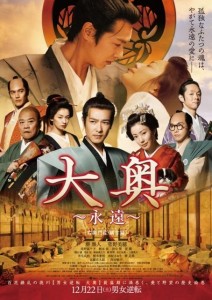
Imagine the following: It’s Japan, at the end of the 17th century. You are the shogun, the most powerful person in the country. Everything runs well, you have a lovely spouse, an attractive concubine, and a countless number of admiring – and admirable – courtiers. But then, your one and only heir dies unexpectedly from a disease – and suddenly securing succession for your family by producing another heir becomes paramount. The usual courtly intrigues are reaching new heights when the only solution is to ramp up your sex life, but…
…what if you’re a woman?
This film, based on a manga, turns history upside down by assuming matriarchy throughout 17th century Japan. The 5th shogun, Tsunayoshi, is a woman who desperately endeavours to conceive a daughter to secure her family’s succession on the throne. Interwoven with her story is that of Emonnosuke, a court noble from Kyoto who enters Tsunayoshi’s services as potential mate and remains at her side throughout her difficult task.
The Castle of Crossed Destinies (Ooku Eien Emonnosuke), 2012, 124 min
Director: Fuminori Kaneko
Cast: Miho Kanno (Tokugawa Tsunayoshi), Masato Sakai (Emonnosuke), Toshiyuki Nishida (Keishoin)
The old problem of succession seen from a completely new angle. Even in matriarchy, taking a different man to bed each night is frowned upon, and it does pose quite some difficulties for Tsunayoshi. Some true historical facts are hinted at, like the ban on killing dogs, but the film lives mainly from the reversal of the sexes and the elaborate costumes and stage designs. There is a lovely happy ending, though…
The Castle of Crossed Destinies is available in Japanese from amazon, but I have not found a version with subtitles.
Tokyo Family
Tomiko and Shukichi Hirayama, living on a small island on the Inland Sea, decide to visit their children who all live in Tokyo. Their eldest son Koichi, with whom they stay, is a doctor running a small clinic; their daughter Shigeko is very busy with running both her family and a beauty salon; only their youngest son Shuji, who works as a freelance stage hand, seems to be content with his life. He is most happy to see his mother, and tells her – as the only one in the family – about his girlfriend. Koichi and Shigeko mean well when they treat their parents to a few nights in a fancy hotel, but Tomiko and Shukichi feel isolated and rejected instead, as they expected to spend time with their children. The well-established routine grinds to a halt when Tomiko unexpectedly dies because of an accident and the one person holding the family together suddenly disappears. How will Shukichi fare, once he must return to his home on the island?
Tokyo Family (Tokyo Kazoku), 2013, 146 minutes
Director: Yoji Yamada
Cast: Isa Hashizume (Shukichi Hirayama), Kazuko Yoshiyuki (Tomiko Hirayama), Masahiko NIshimura (Koichi), Tomoko Nakajima (Shigeko), Satoschi Tsumabuki (Shoji)
This film is a remake of Tokyo Story from 1953. It is a very slow film without much of an exciting plot. It depicts life as it is in Japan; the tiny spaces and minimal pockets of private time that need to be carefully carved out from obligations towards others. Probably the best glimpse into busy modern Japanese city life I have seen.
A Japanese version of Tokyo Family with English subtitles is available from amazon.
The Woodsman and the Rain
Kishi Katsuhiko is a 60 year old woodcutter in a quiet rural village. One day his work is interrupted by a member of a filmcrew, asking him to be quiet while they are shooting. Some days later they meet again, and Kishi helps them find a suitable location for the next scene, in which he ends up playing a minor role.
Koichi Tanabe, the insecure young man Kishi finds so annoying at first, turns out to be the director, and slowly a friendship between the two starts, beneficial for the both of them – and the movie. With Kishi’s knowledge of the best places for shooting and his connections to the other villagers, Koichi’s first movie becomes successful beyond his wildest dreams. In the end, Koichi has become more secure in his demands as a director, and Kishi has more respect for the plights of his own son.
The Woodsman and the Rain (Kitsutsuki to Ame), 2011, 129 minutes
Director: Shuichi Okita
Cast: Koji Yakusho (Kishi Katsuhiko), Shun Ogura (Koichi Tanabe)
Winner of the 2011 Tokyo International Film Festival’s Special Jury Prize
I went to see the film with very little expectations, but I ended up greatly enjoying it. I think it depicts the dynamics of a friendship between old and young quite well, and how important outside input can be when it comes to our own family relationships. But this is not a big drama – some of the scenes are outright funny, and the awkward and shy Koichi and the down to earth Katsuhiko who acts like a supportive father figure make a good team. It’s not high art – especially given that the movie in the movie is about zombies – but nevertheless time pleasantly spent.
There is an English version of The Woodsman and the Rain available at amazon.

